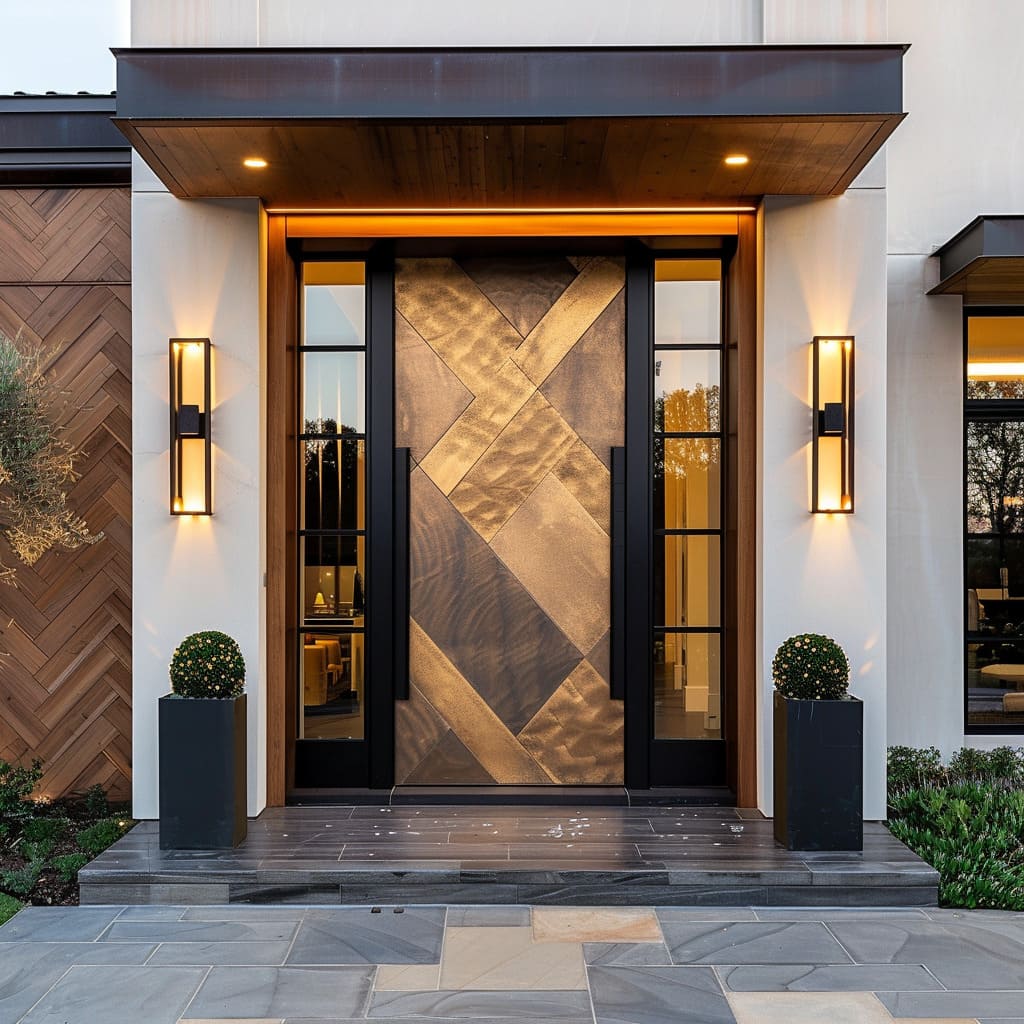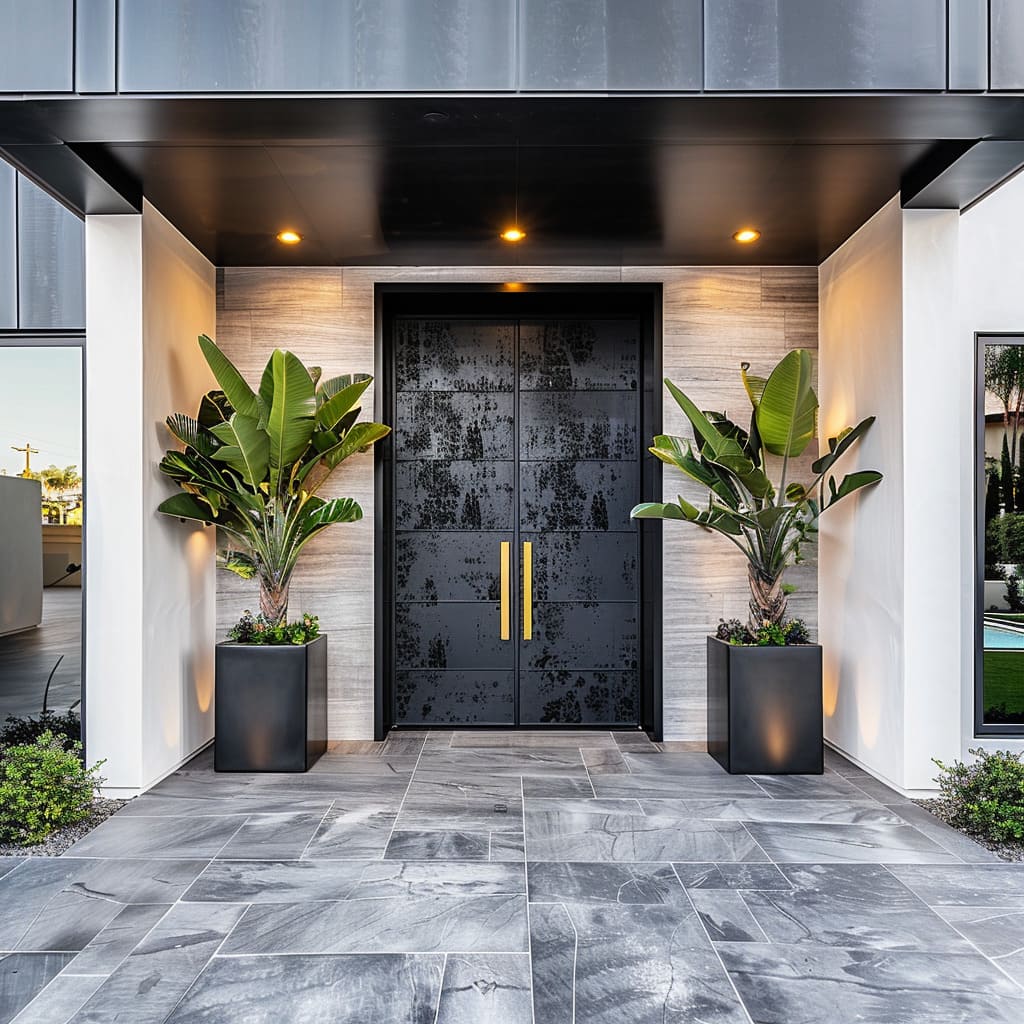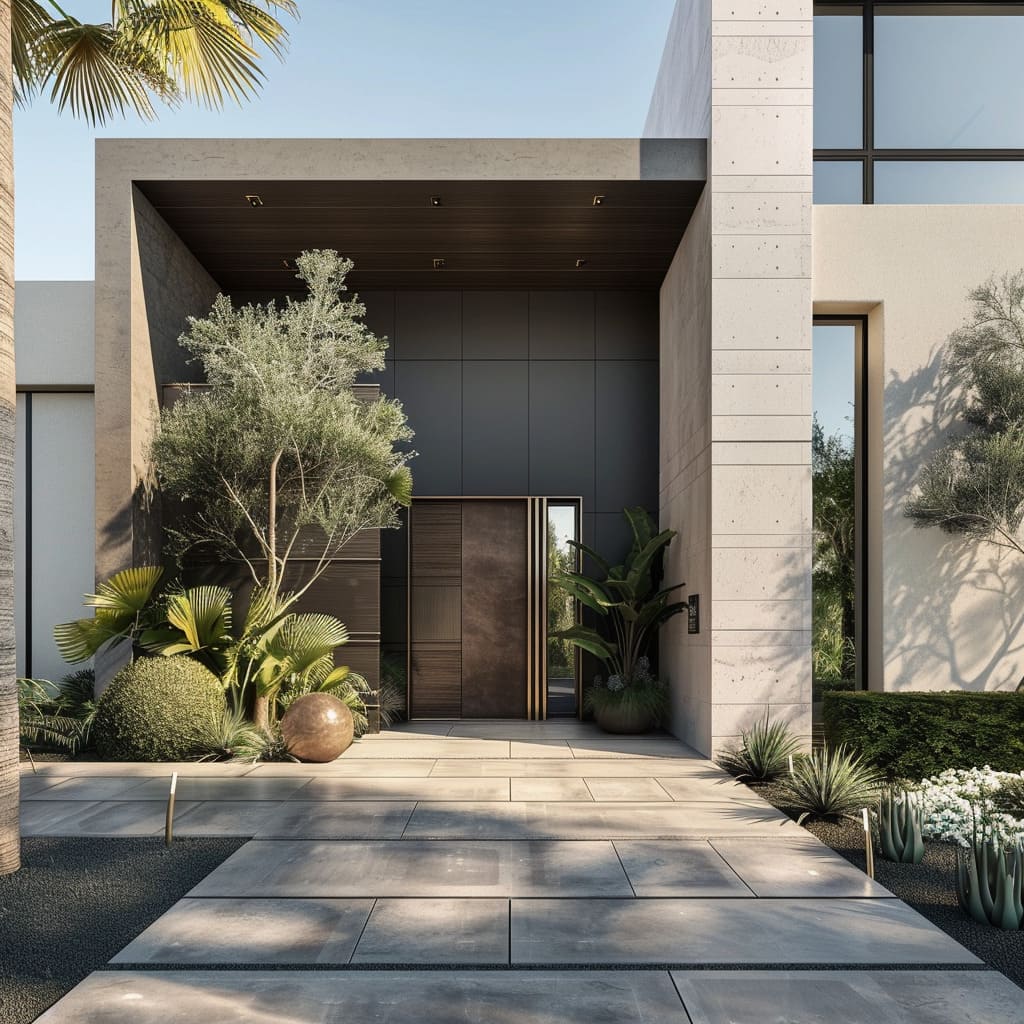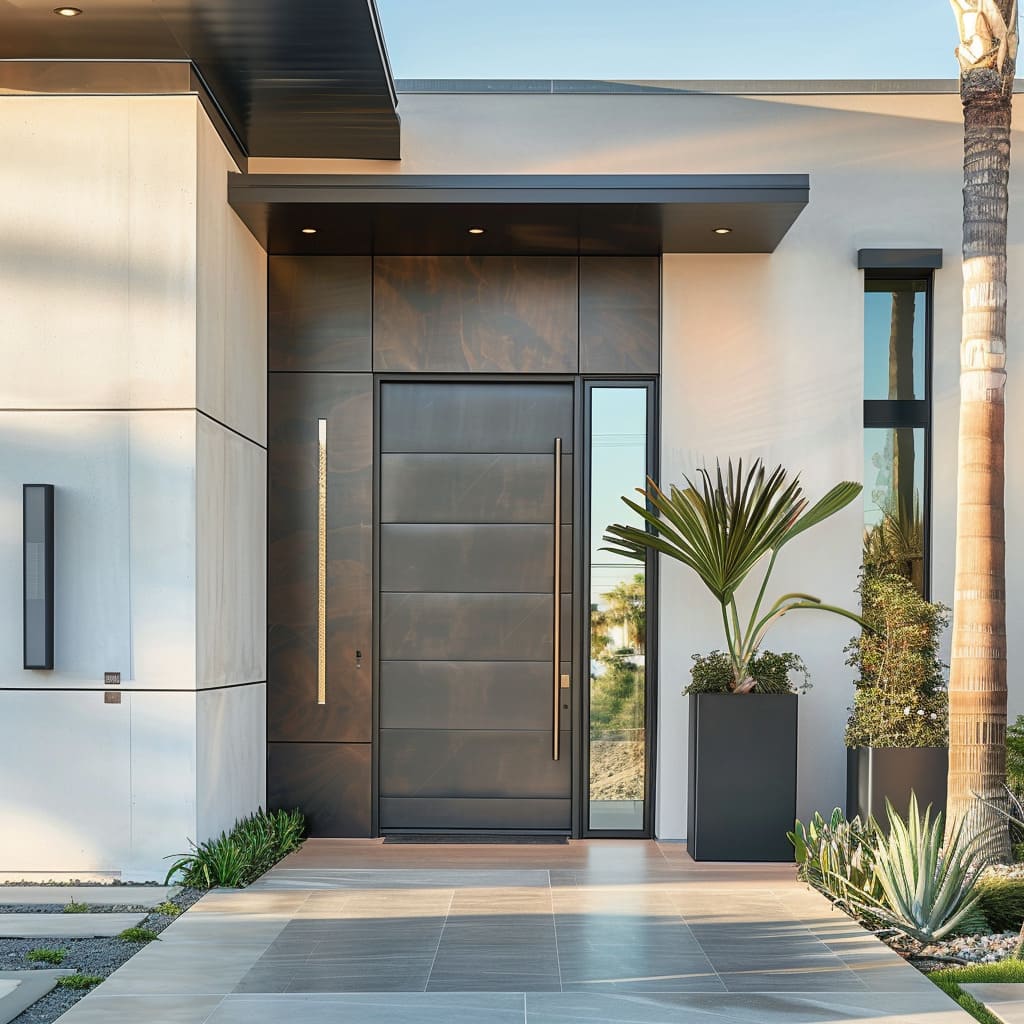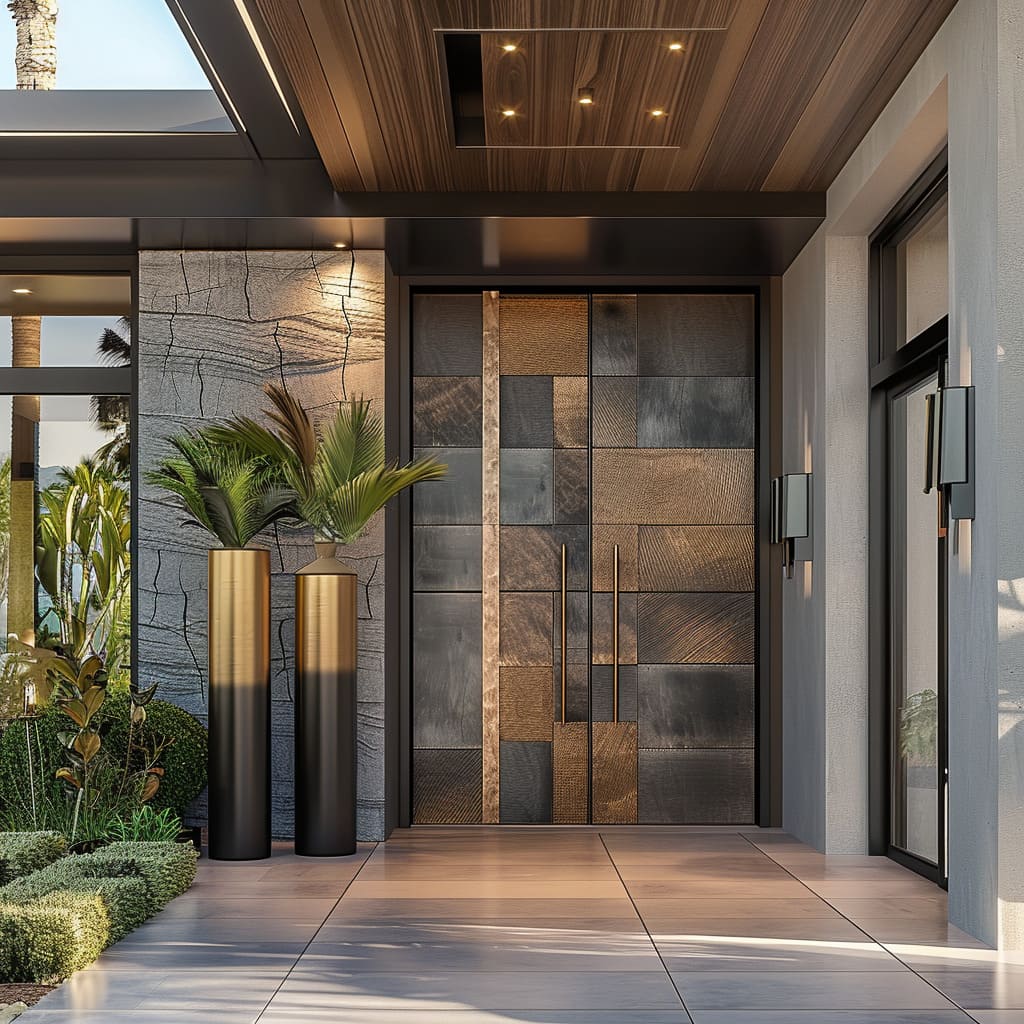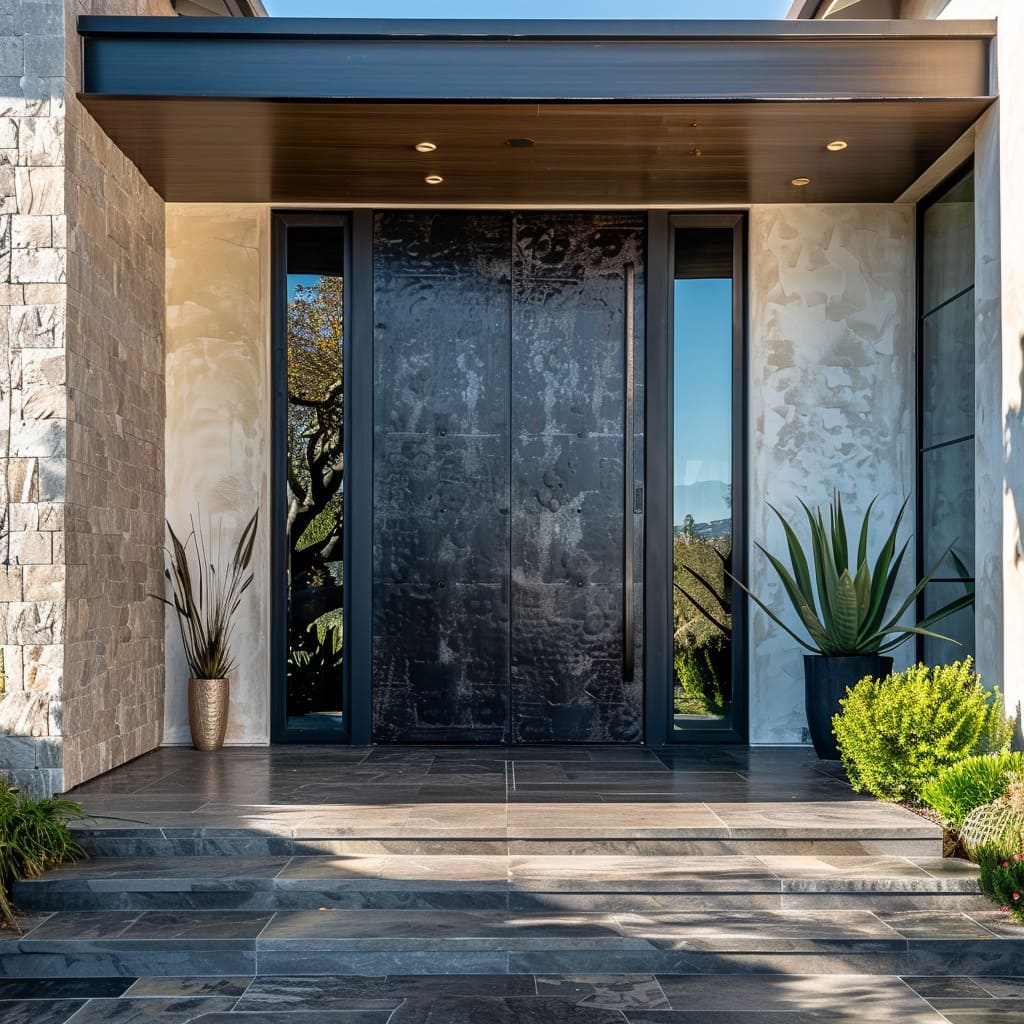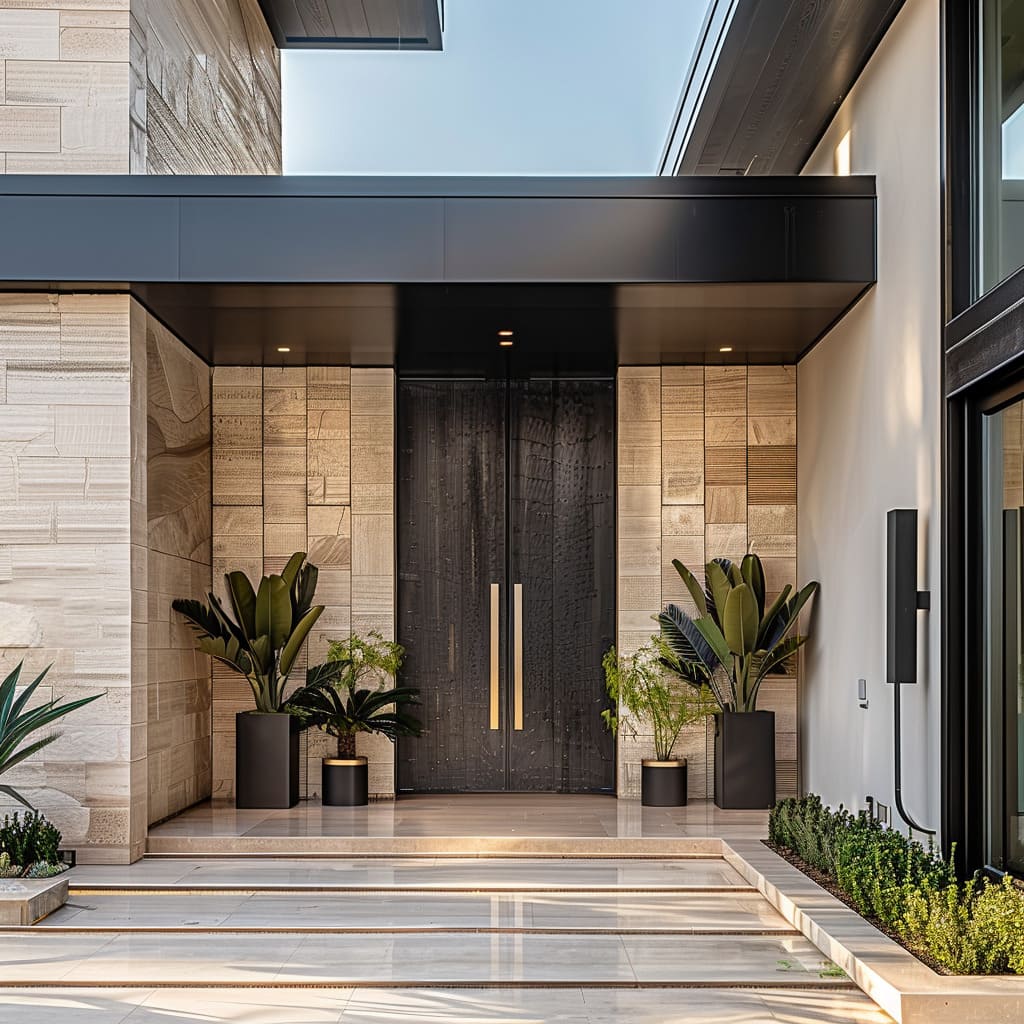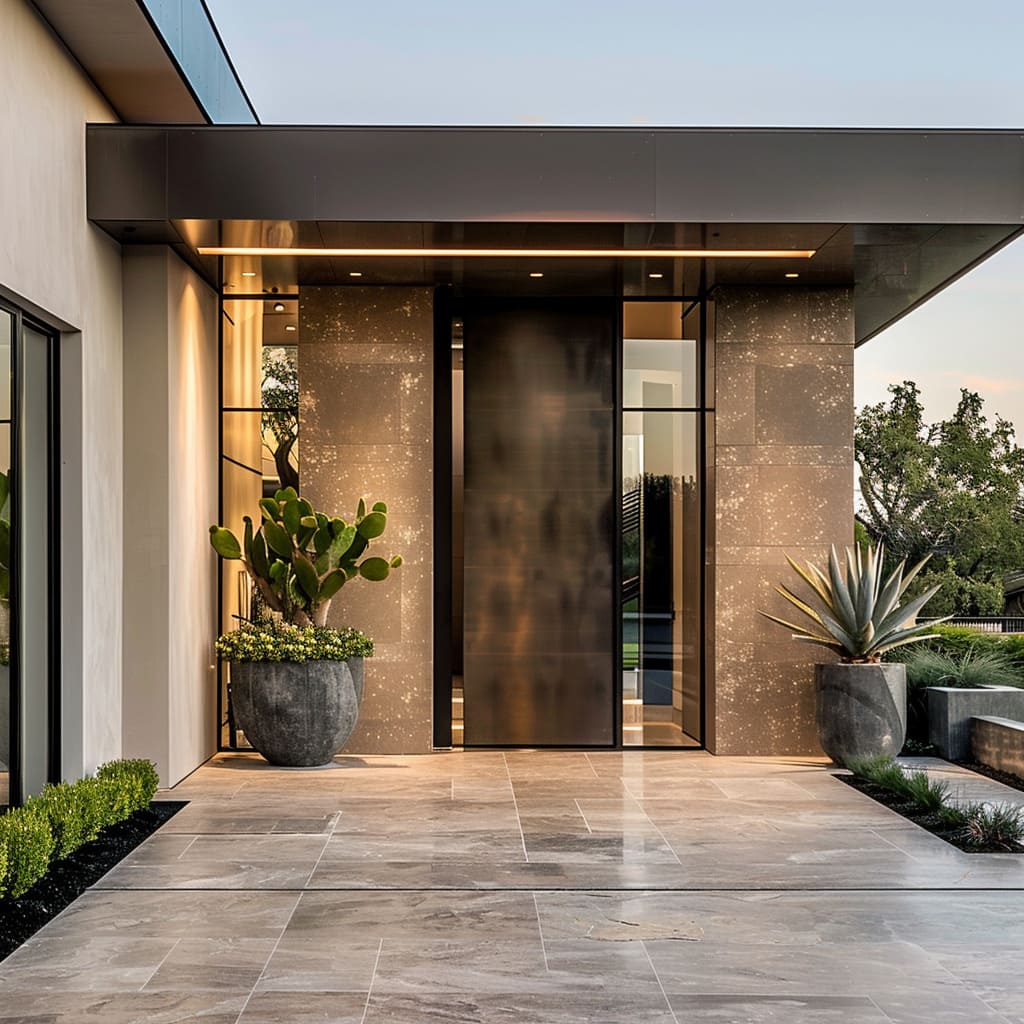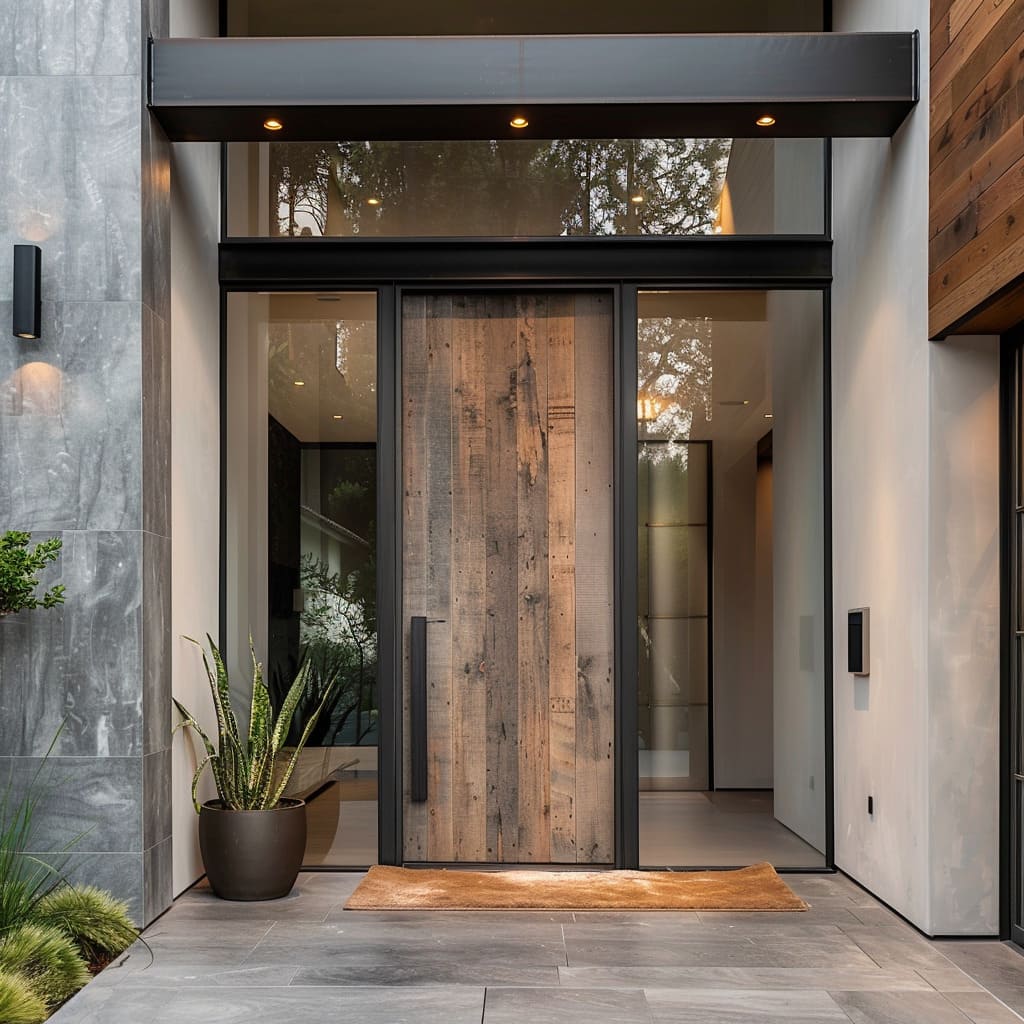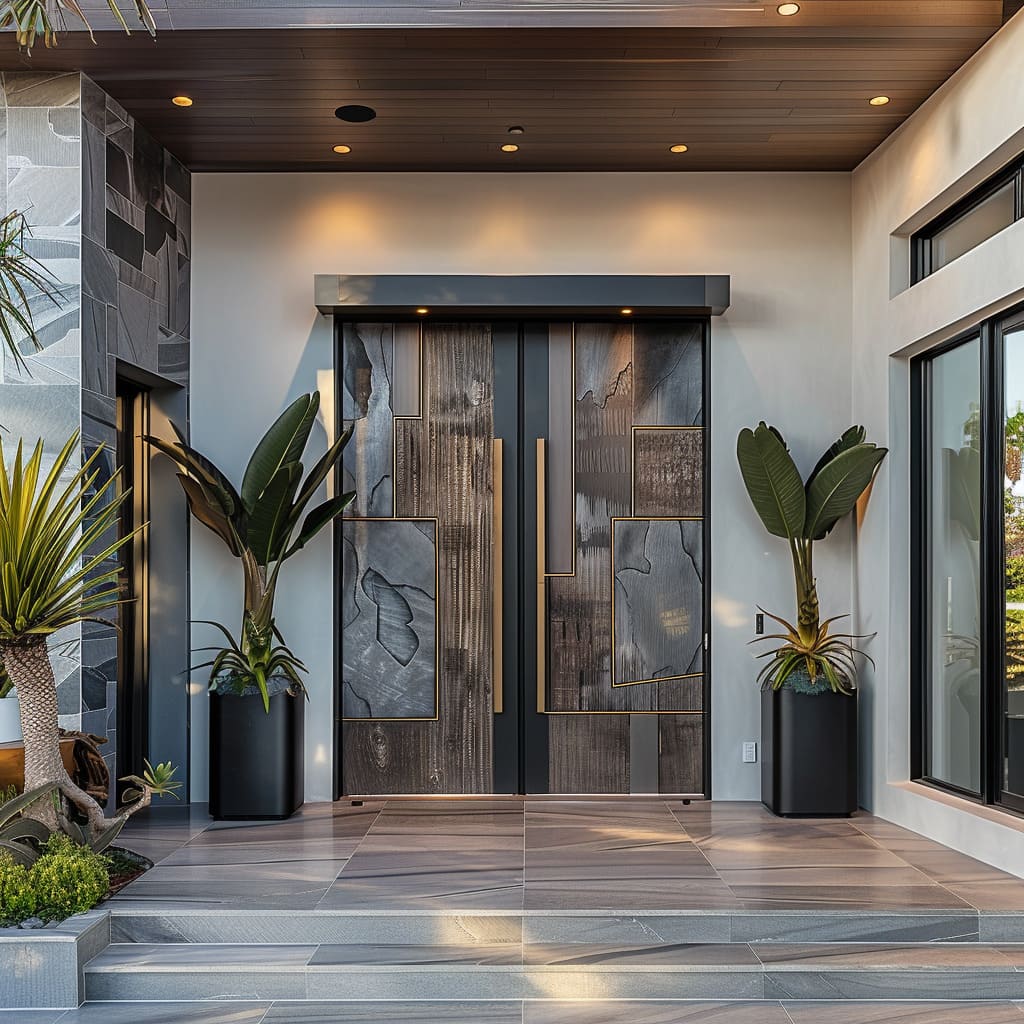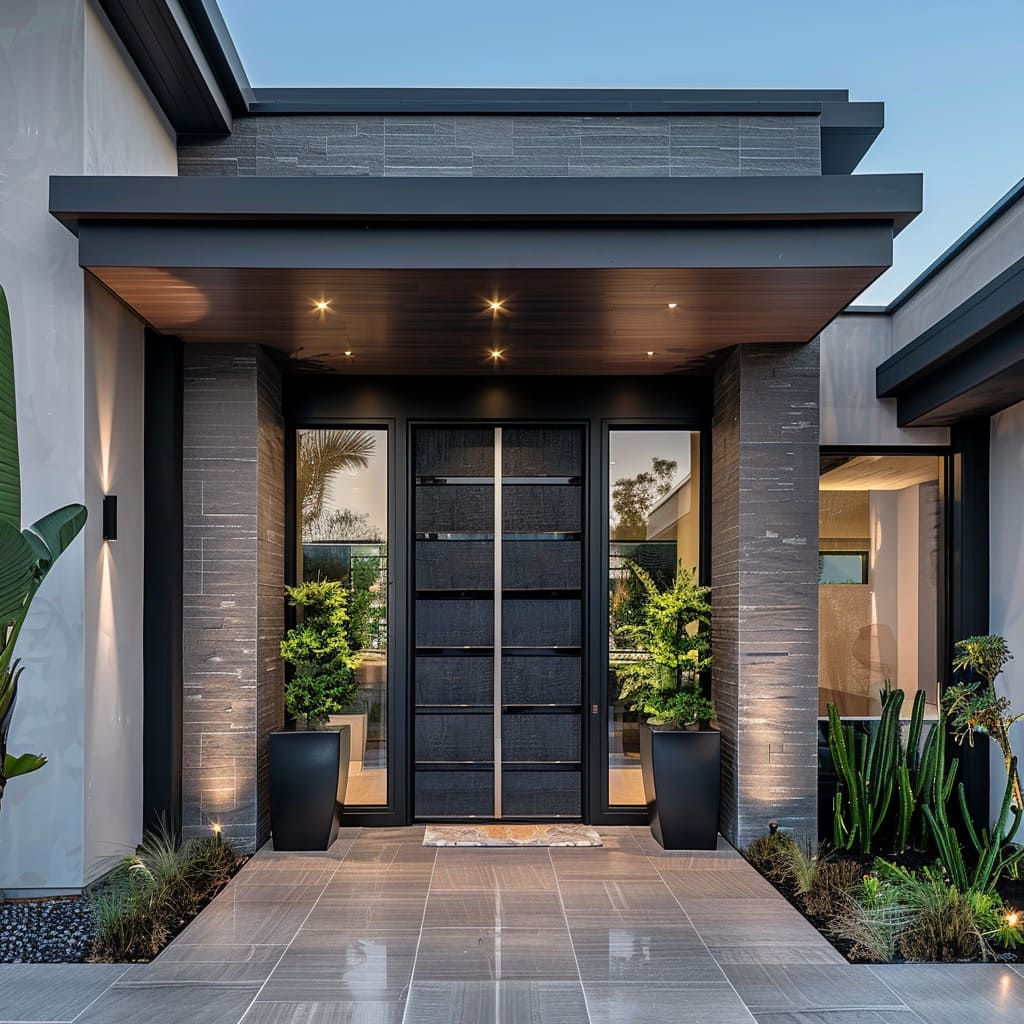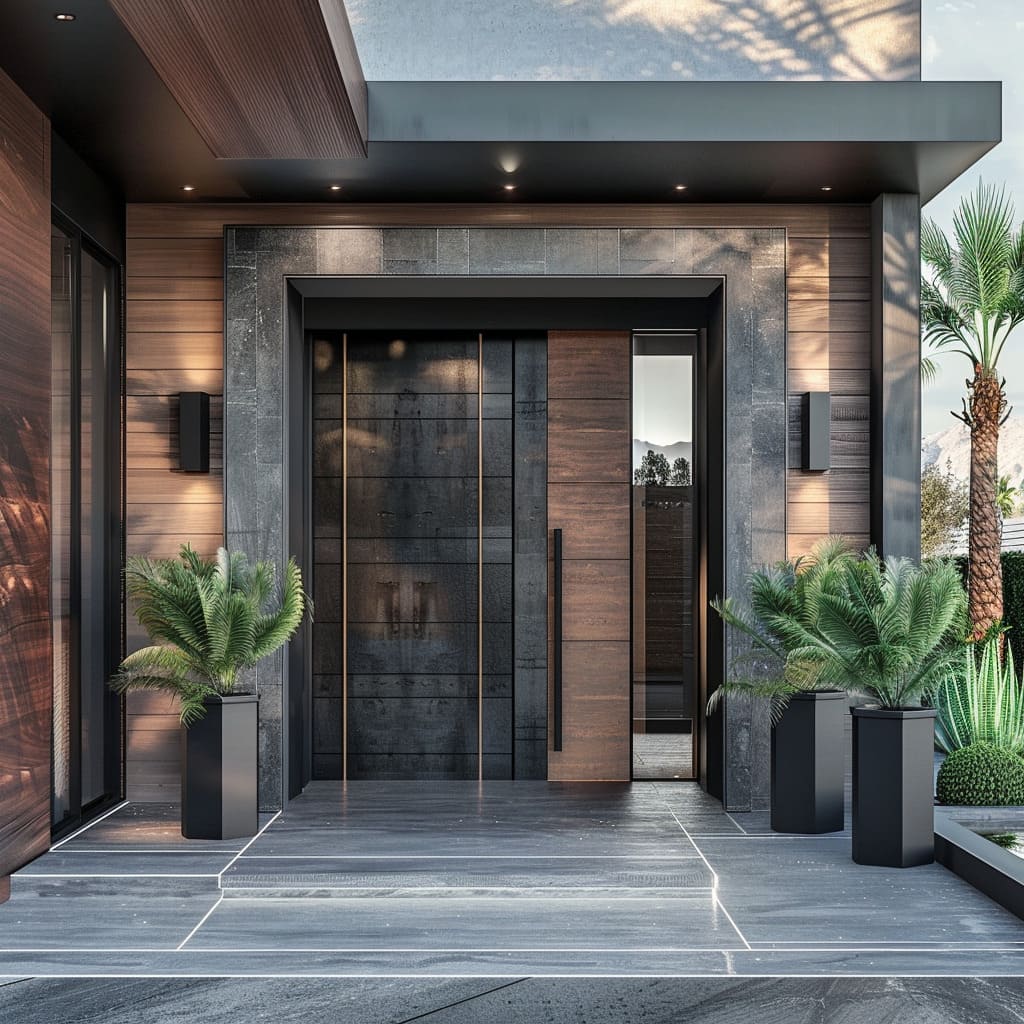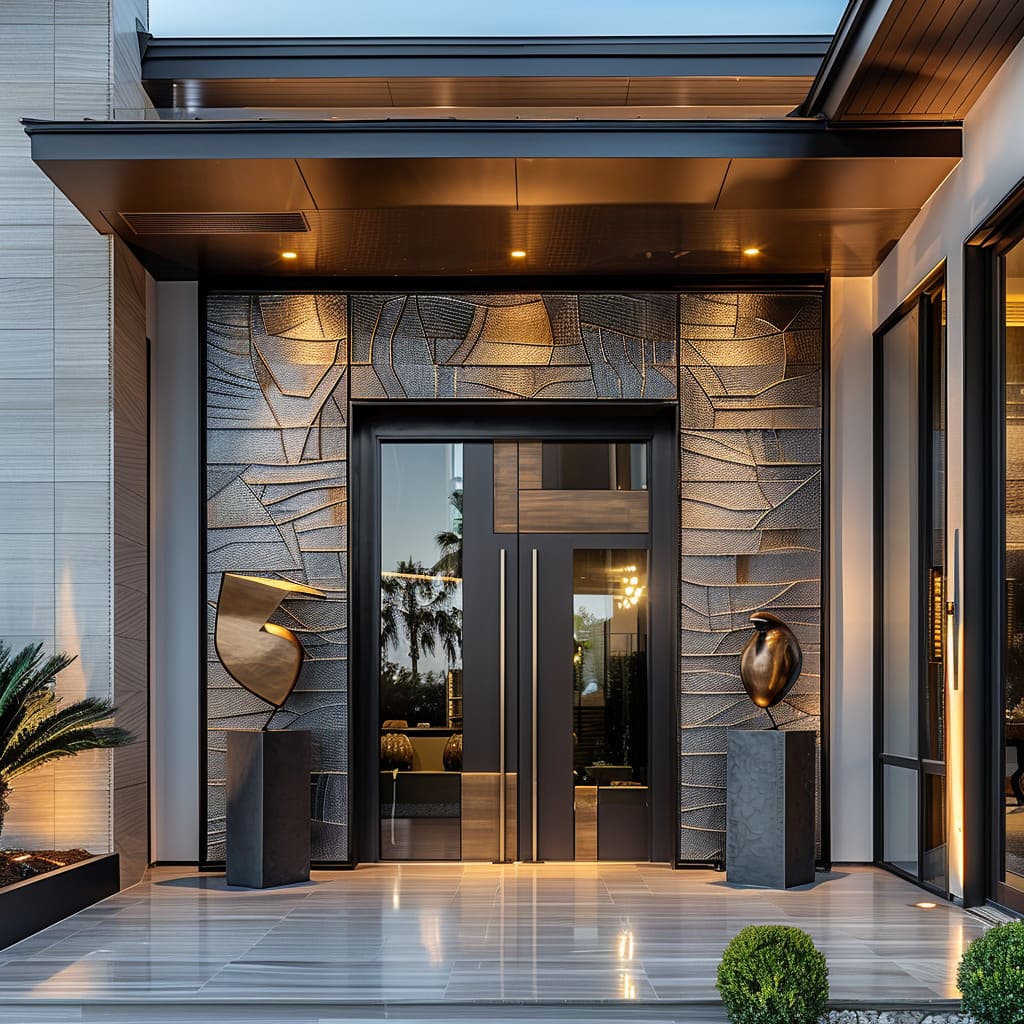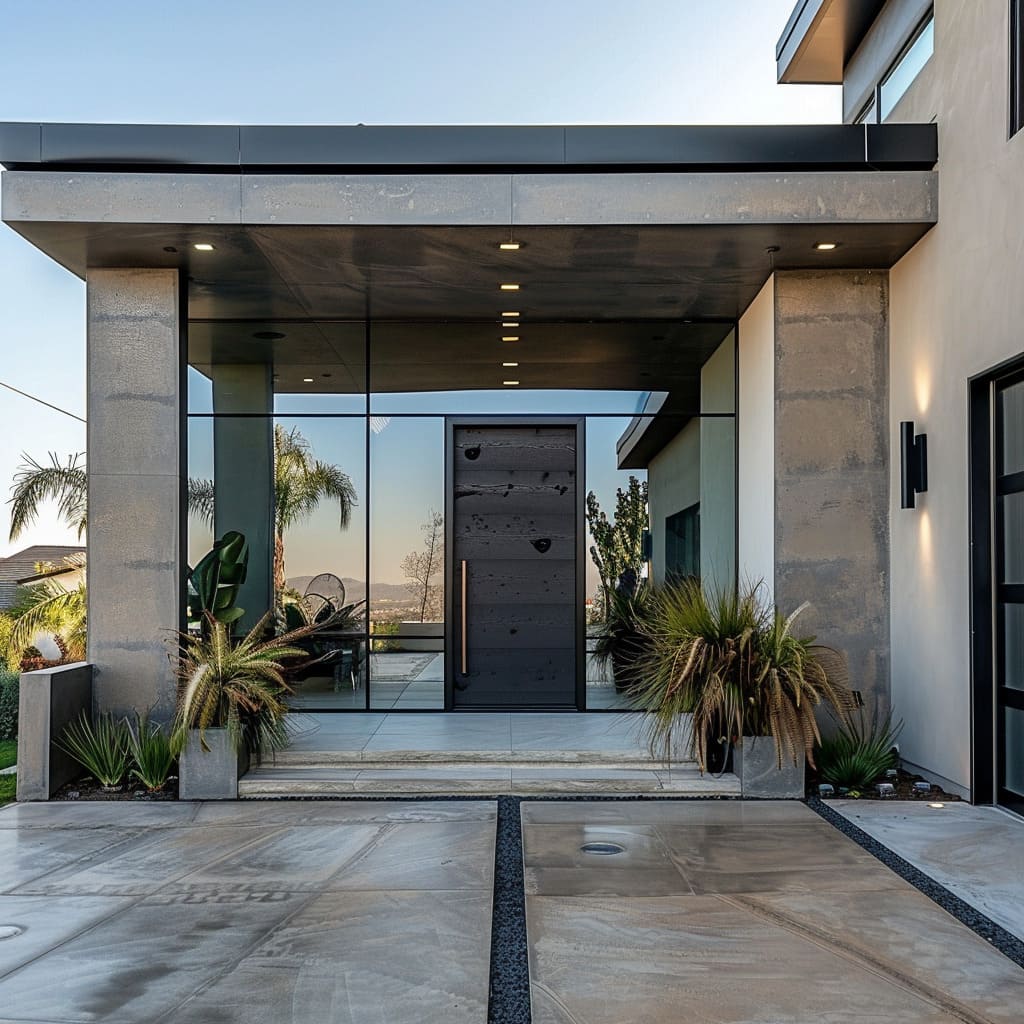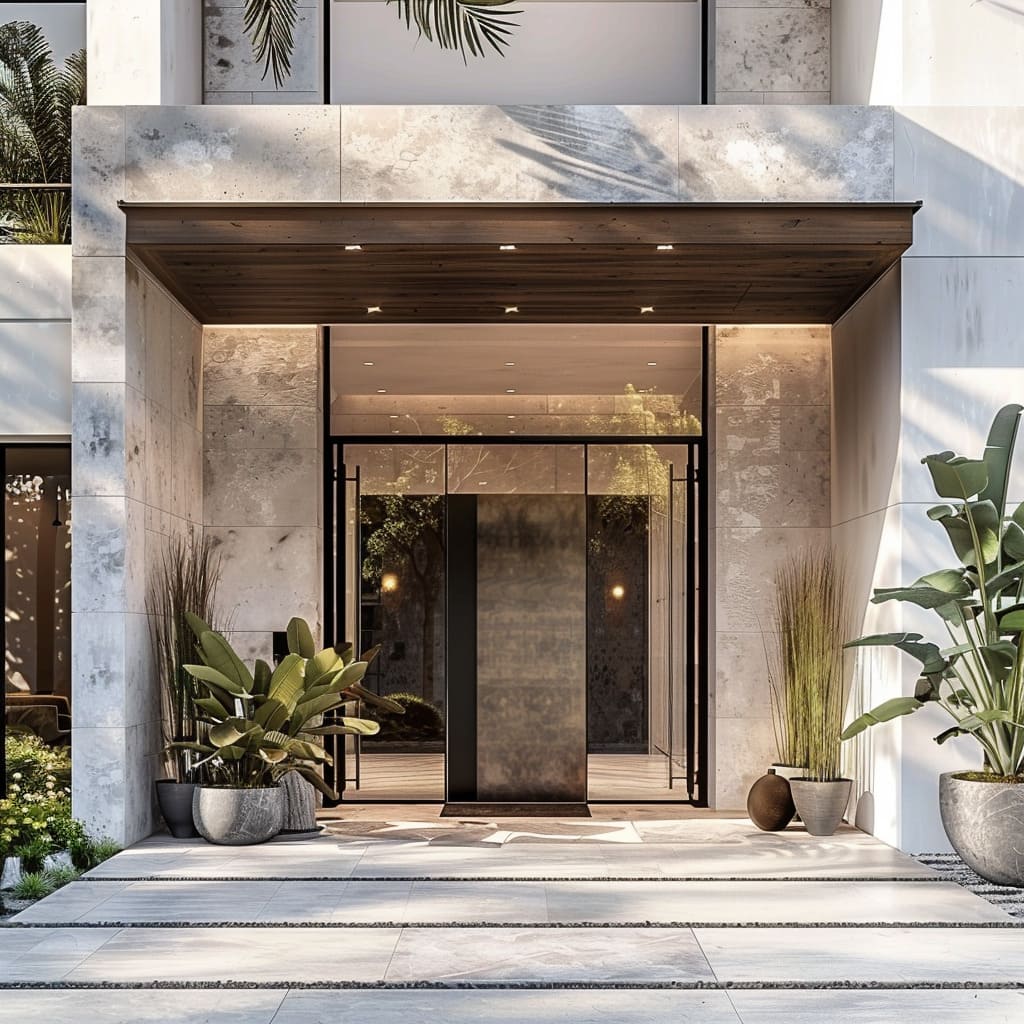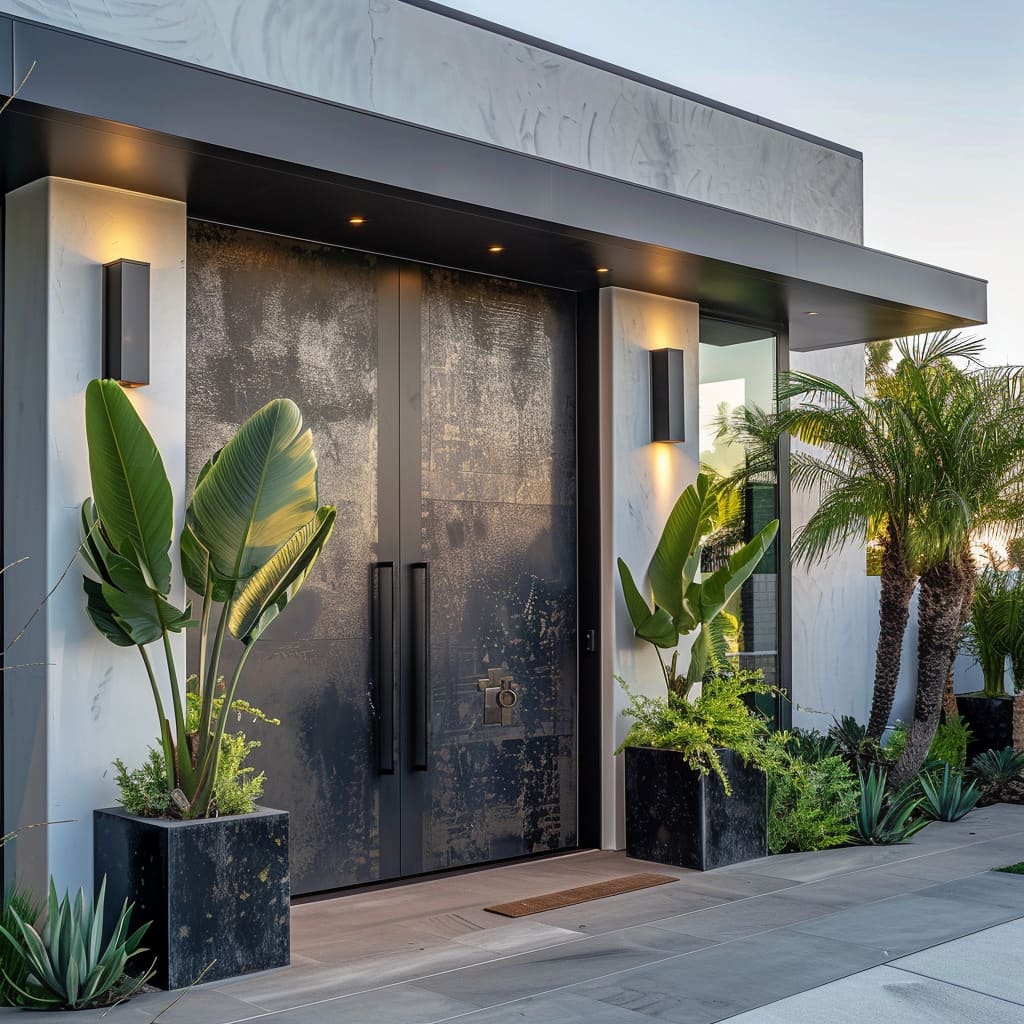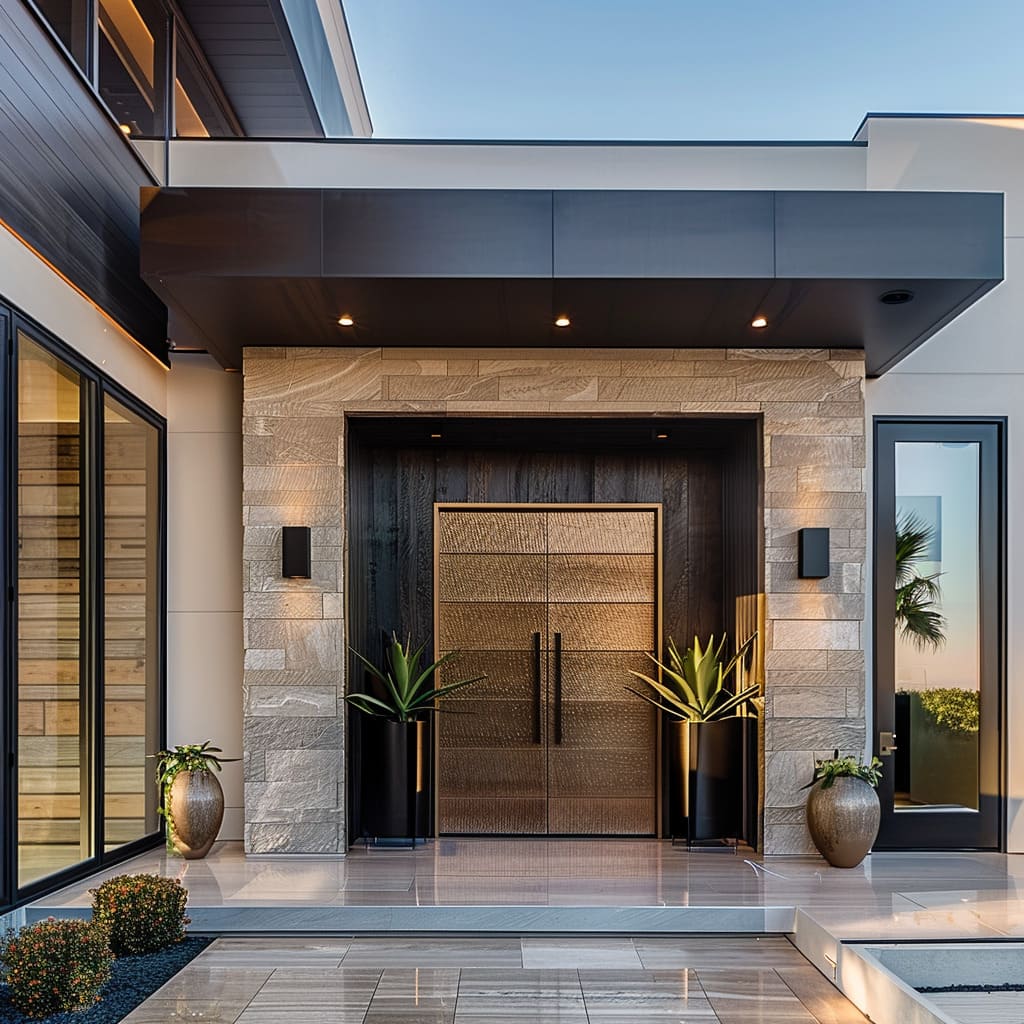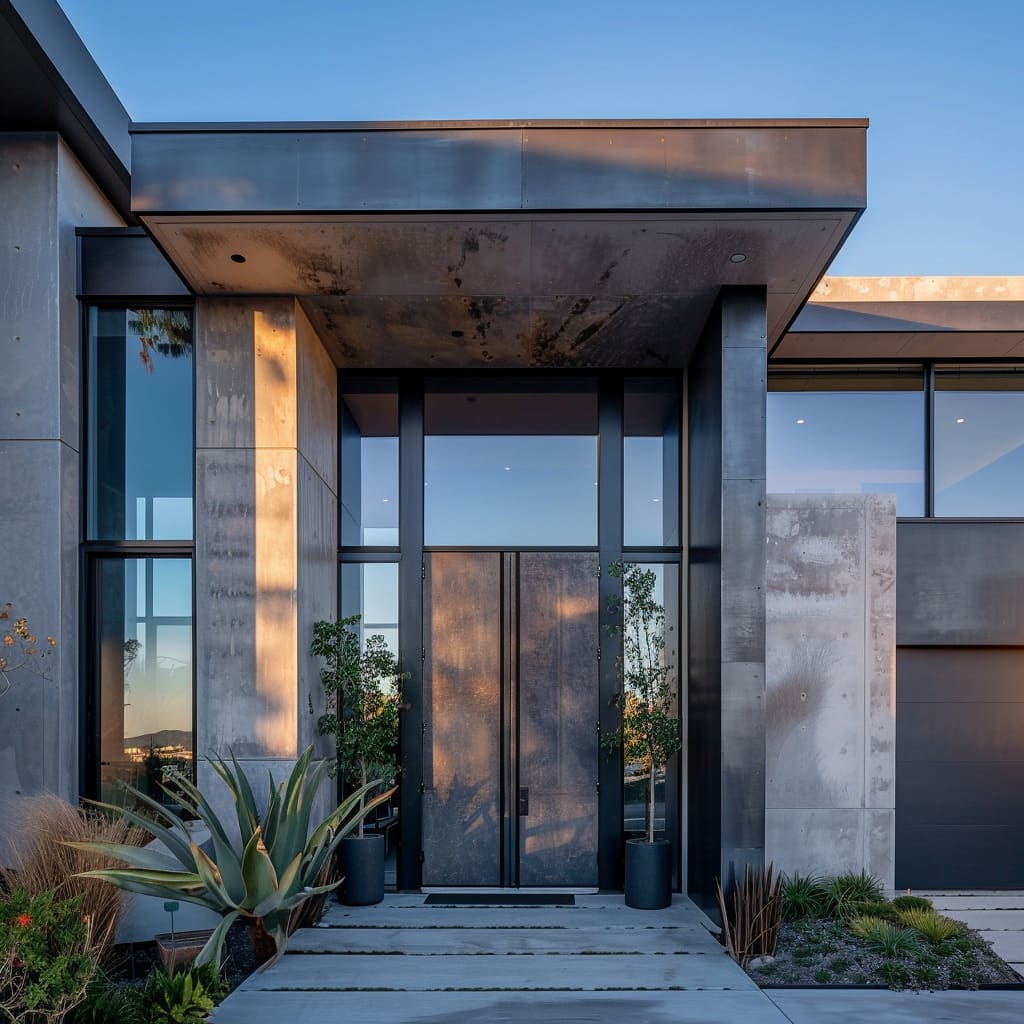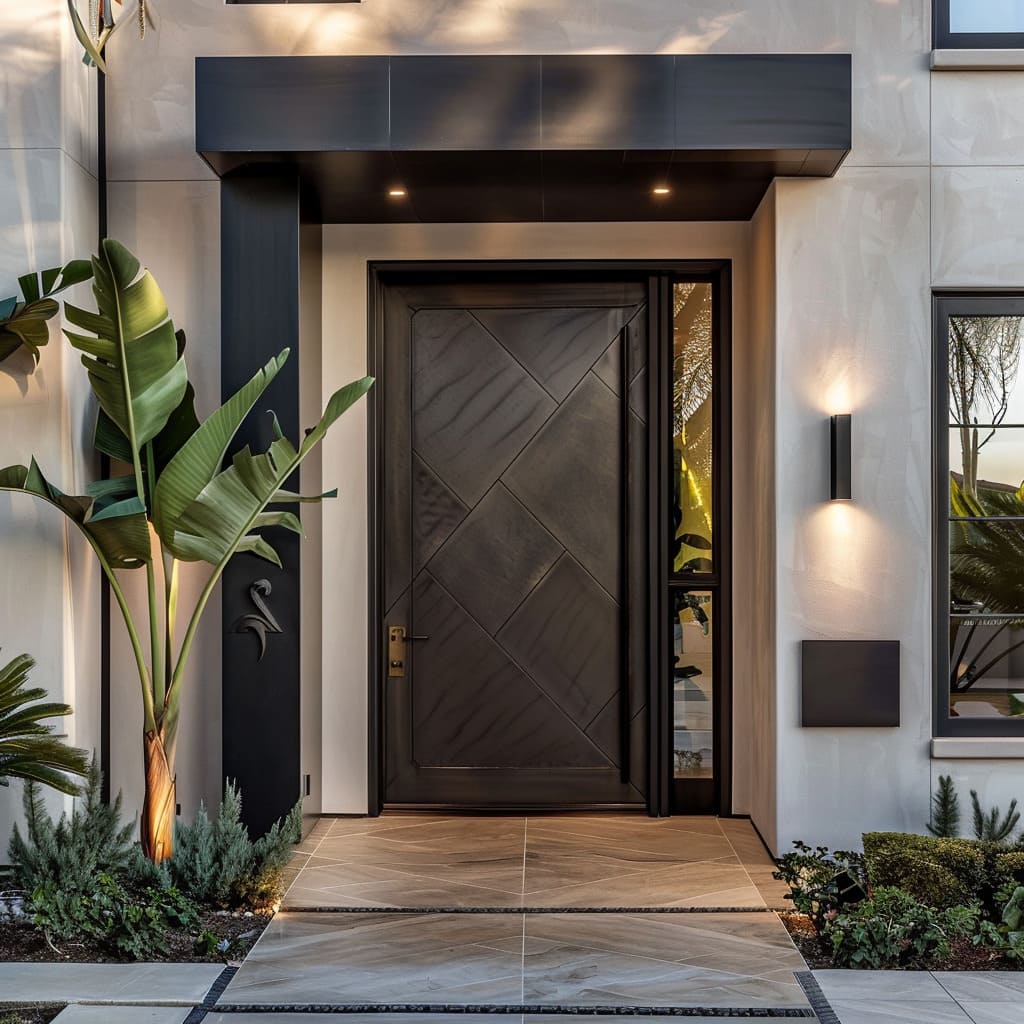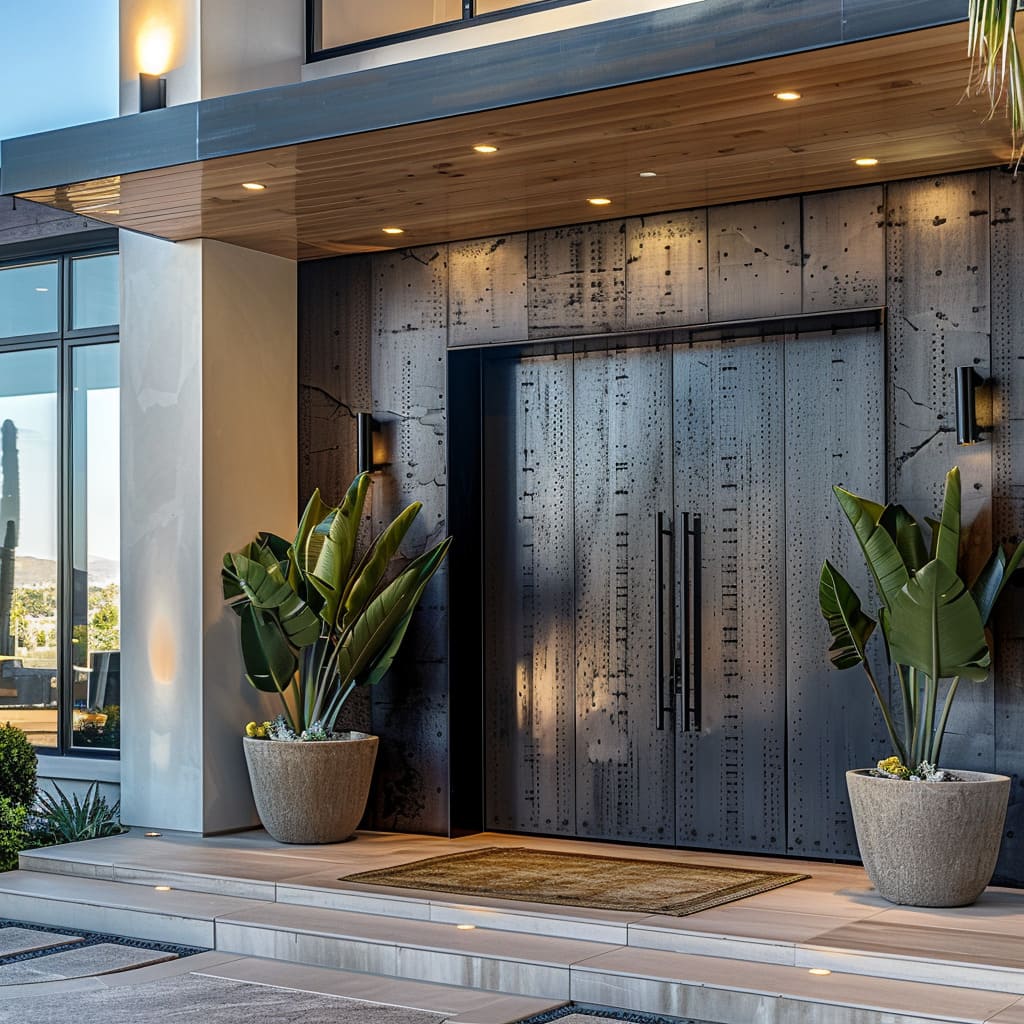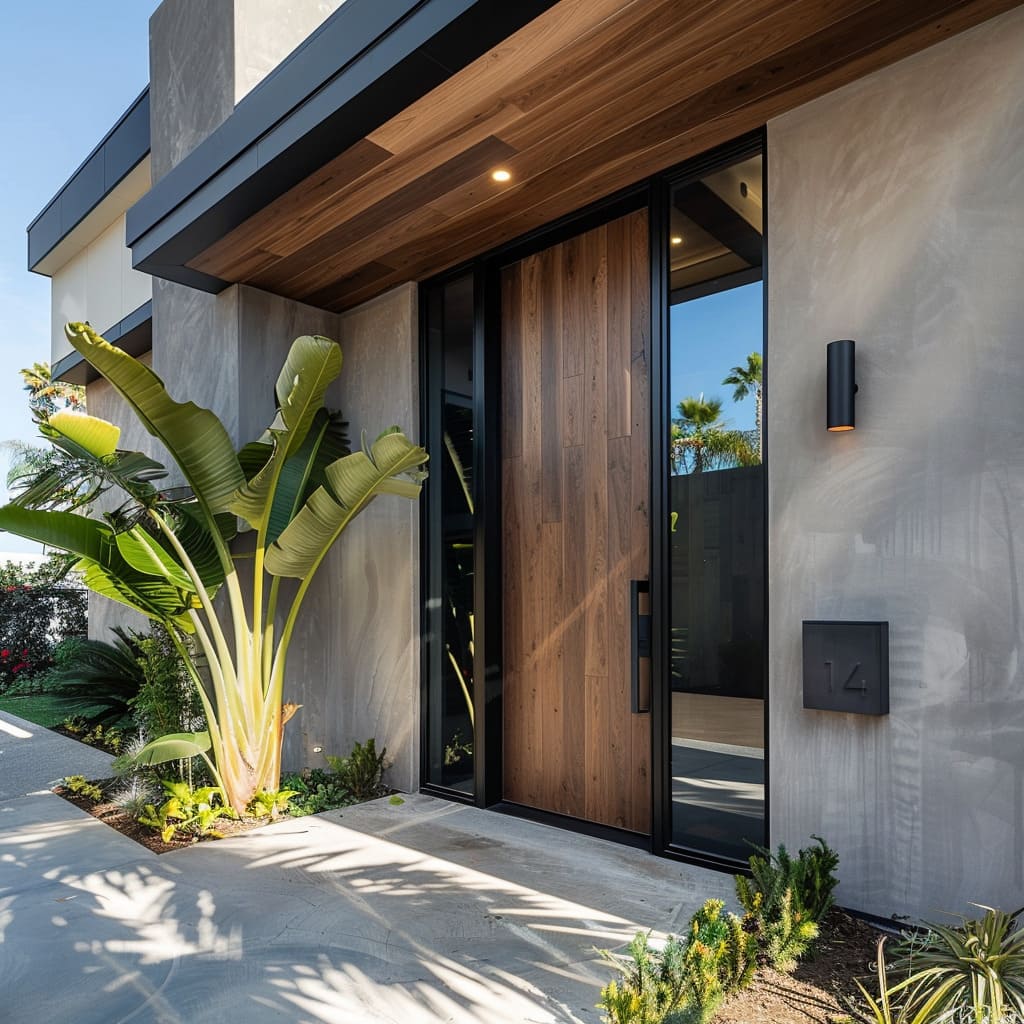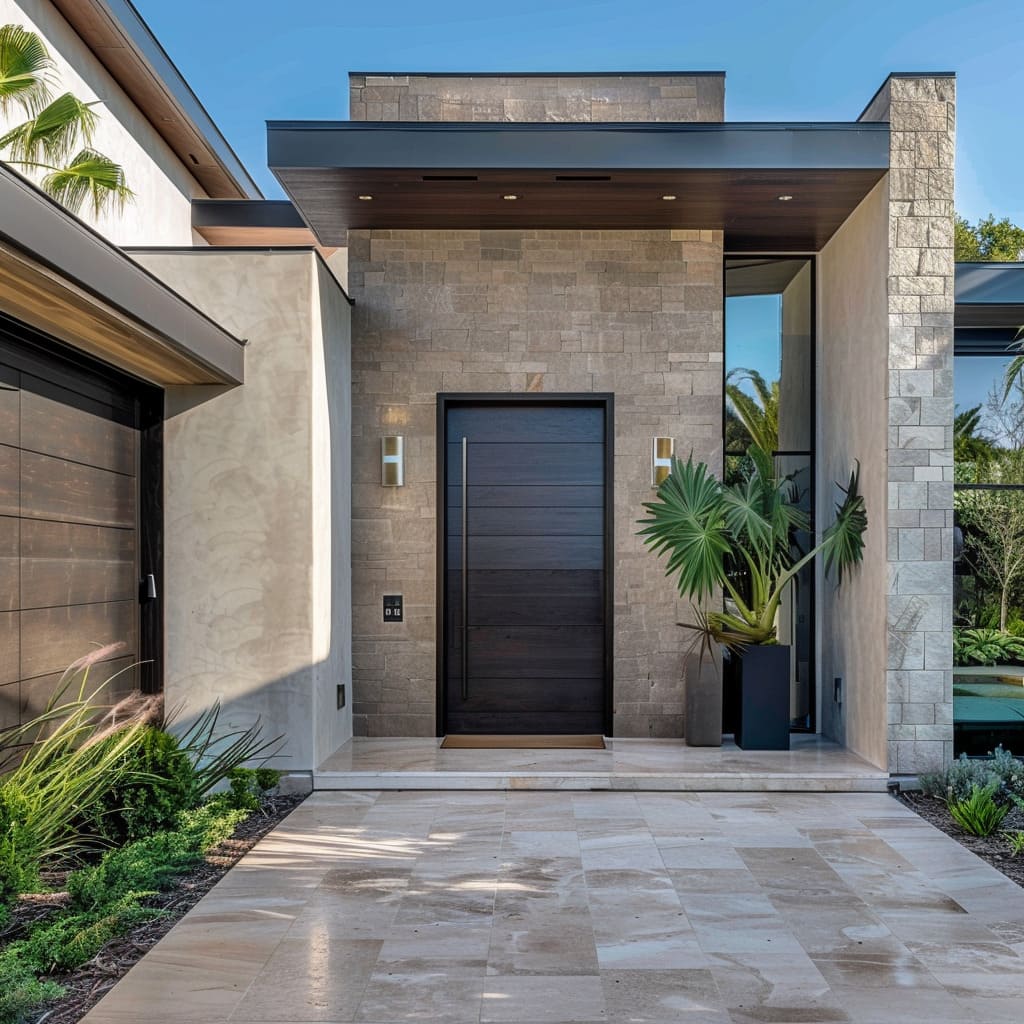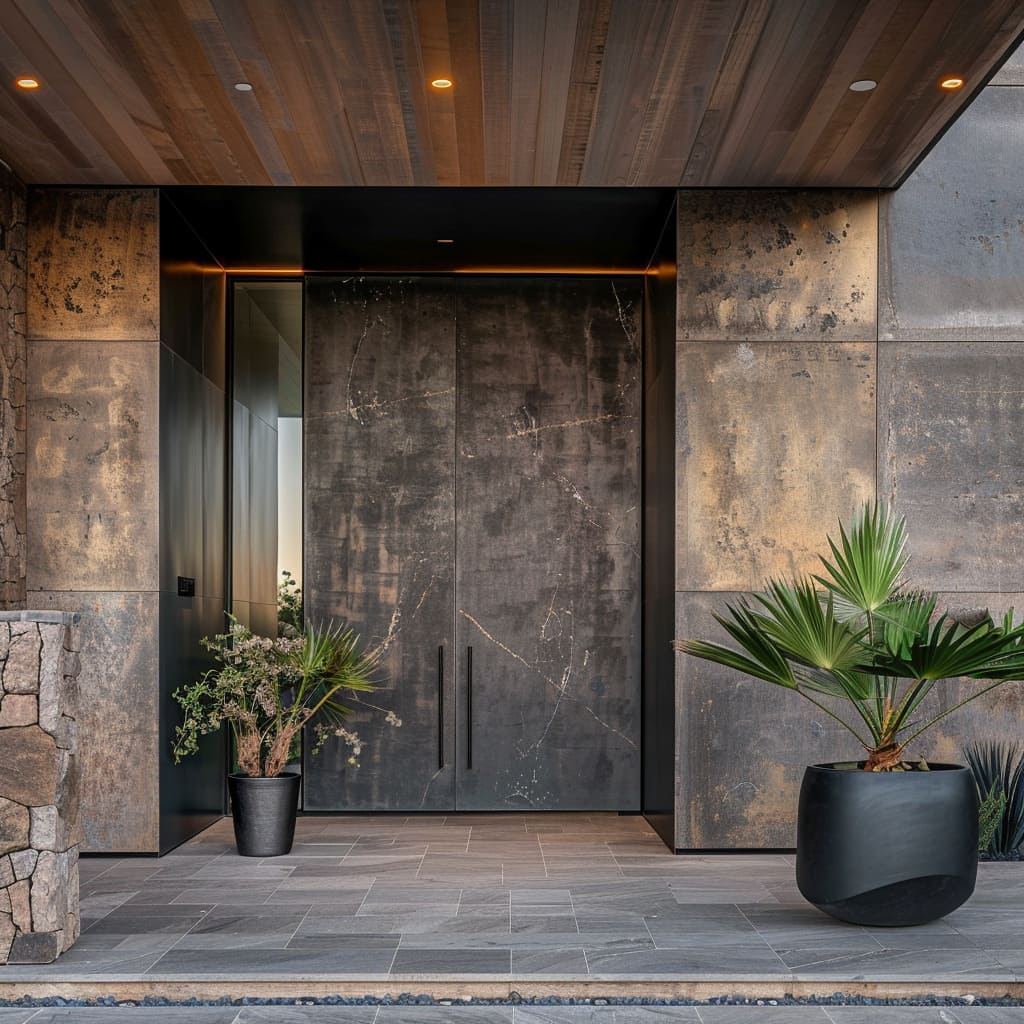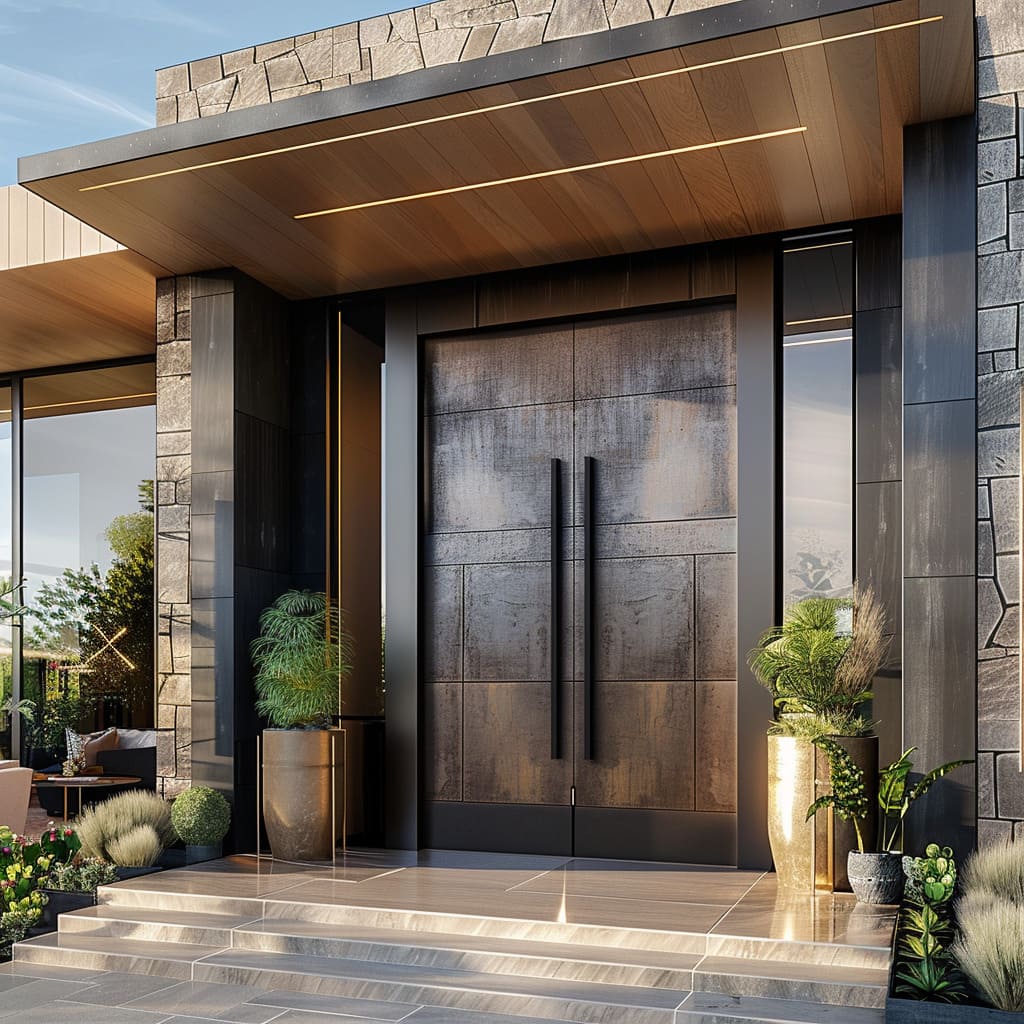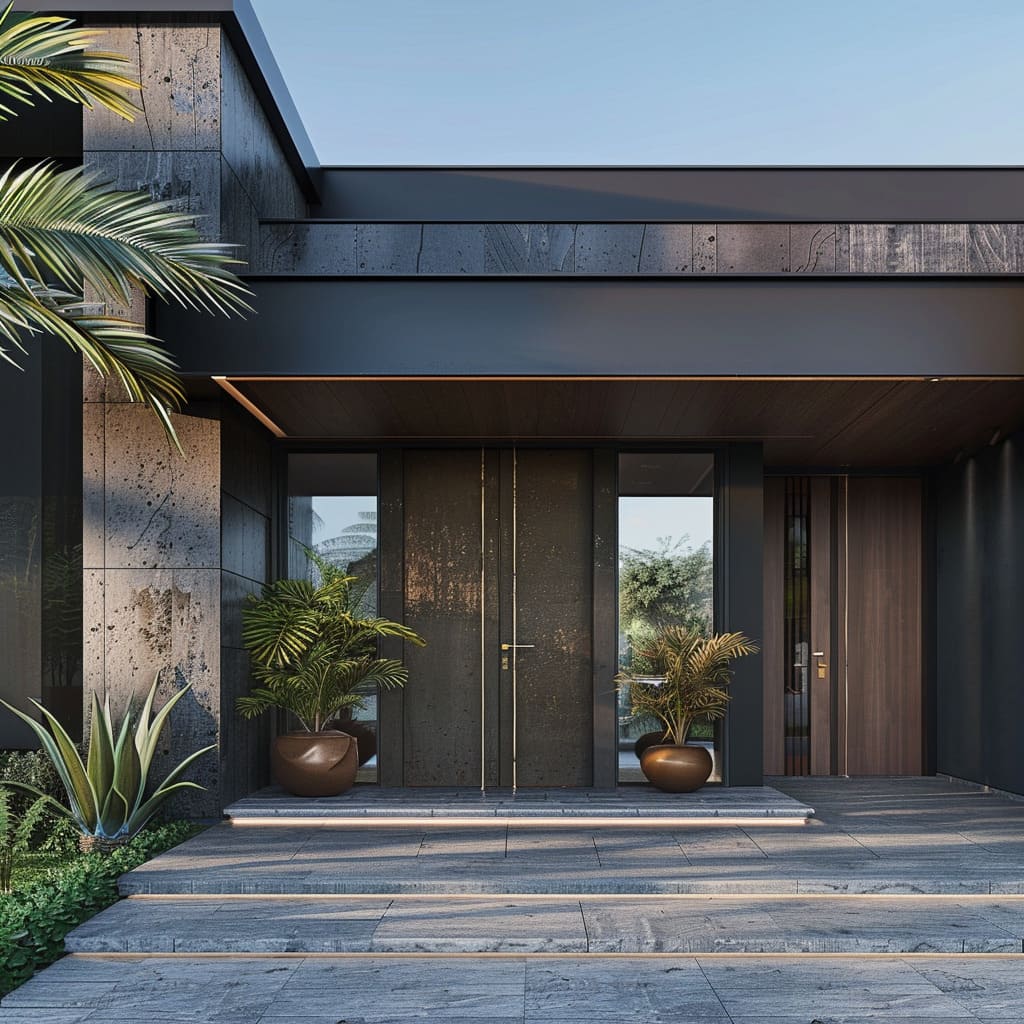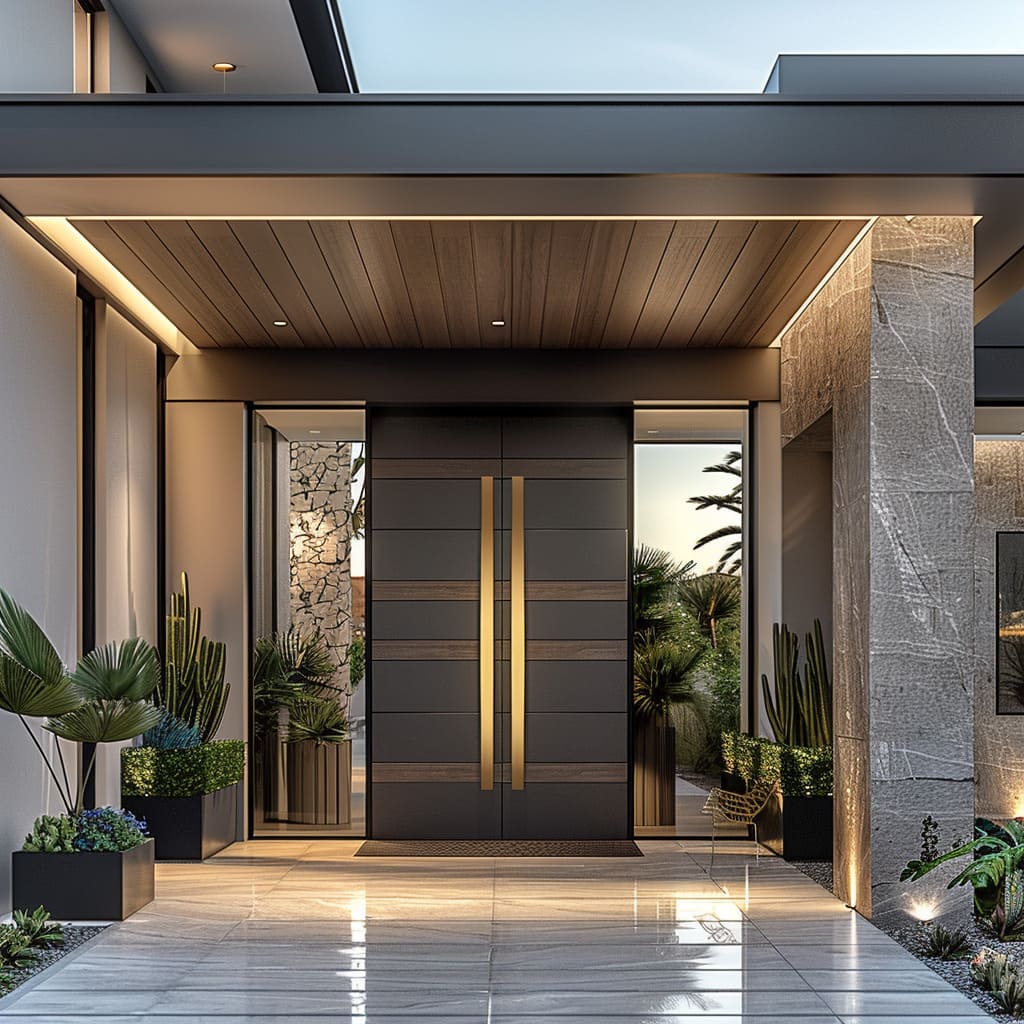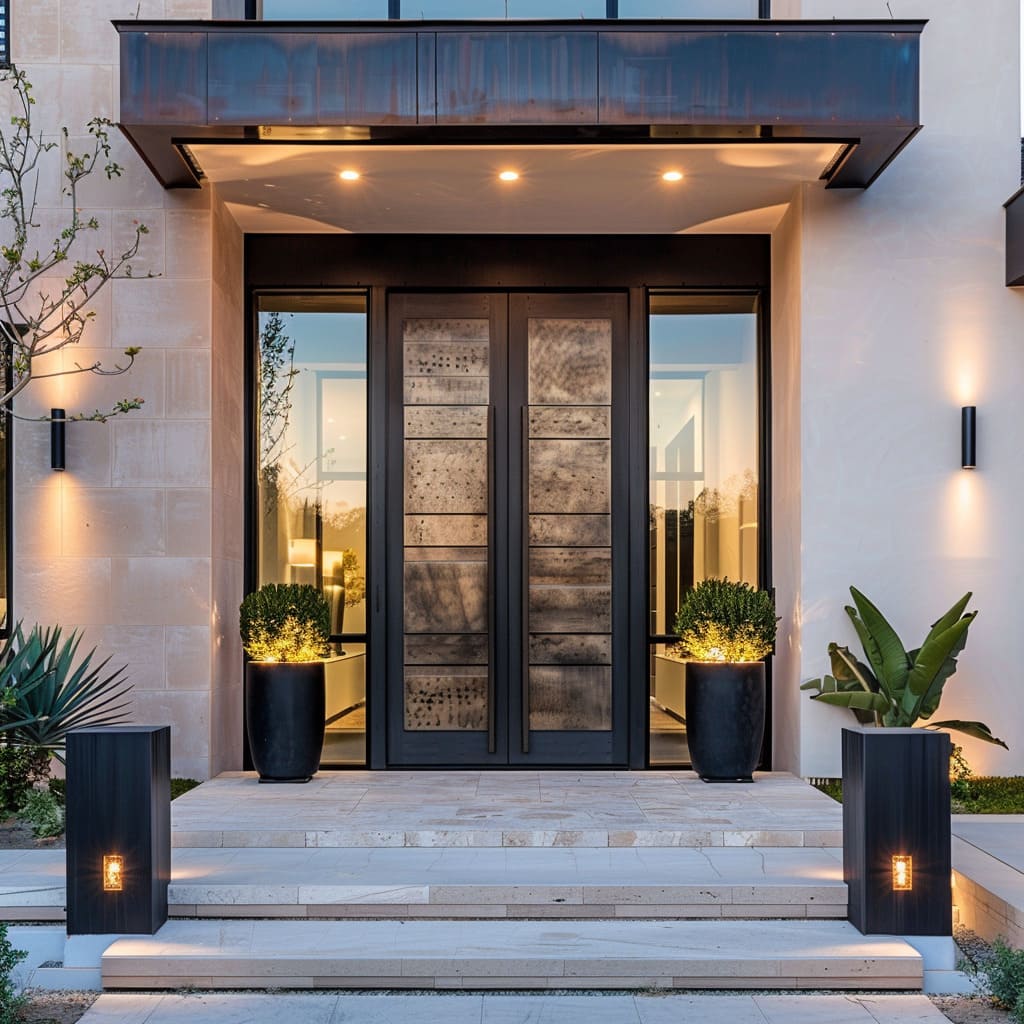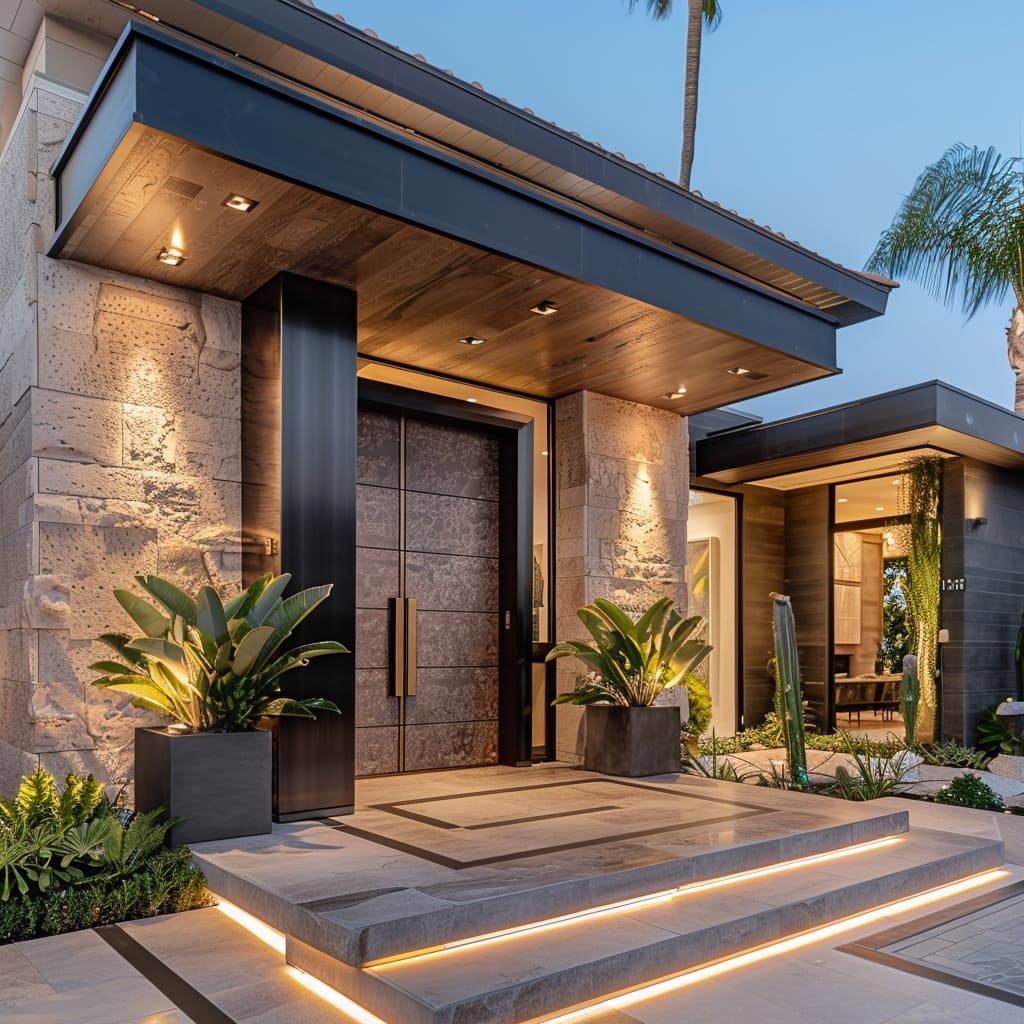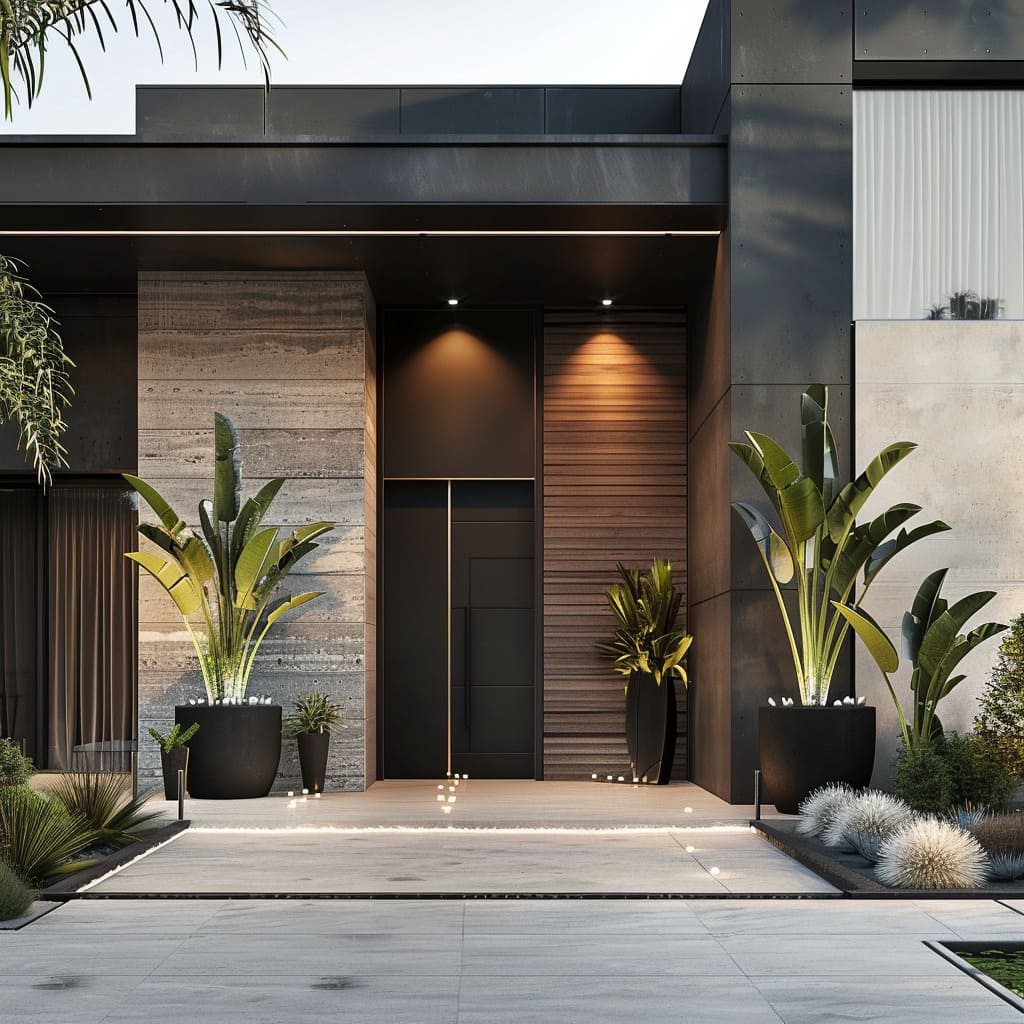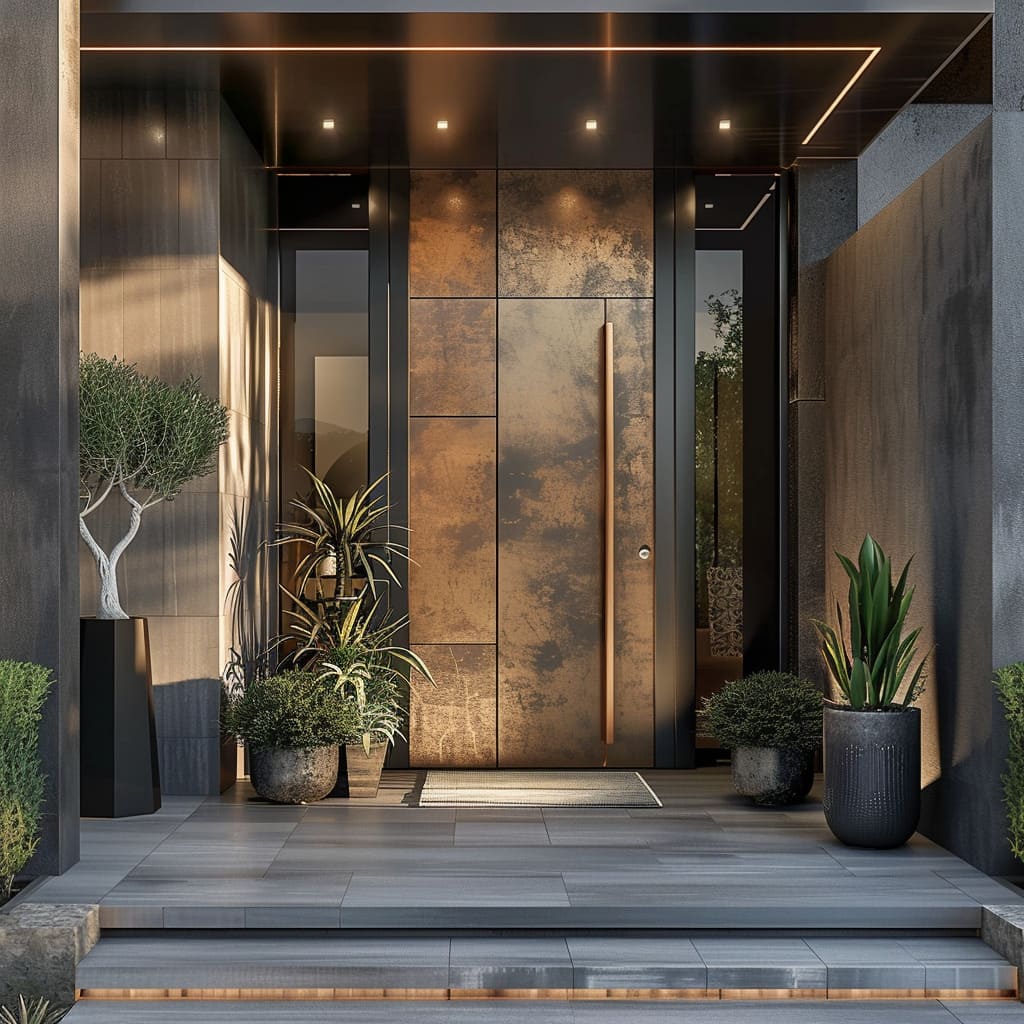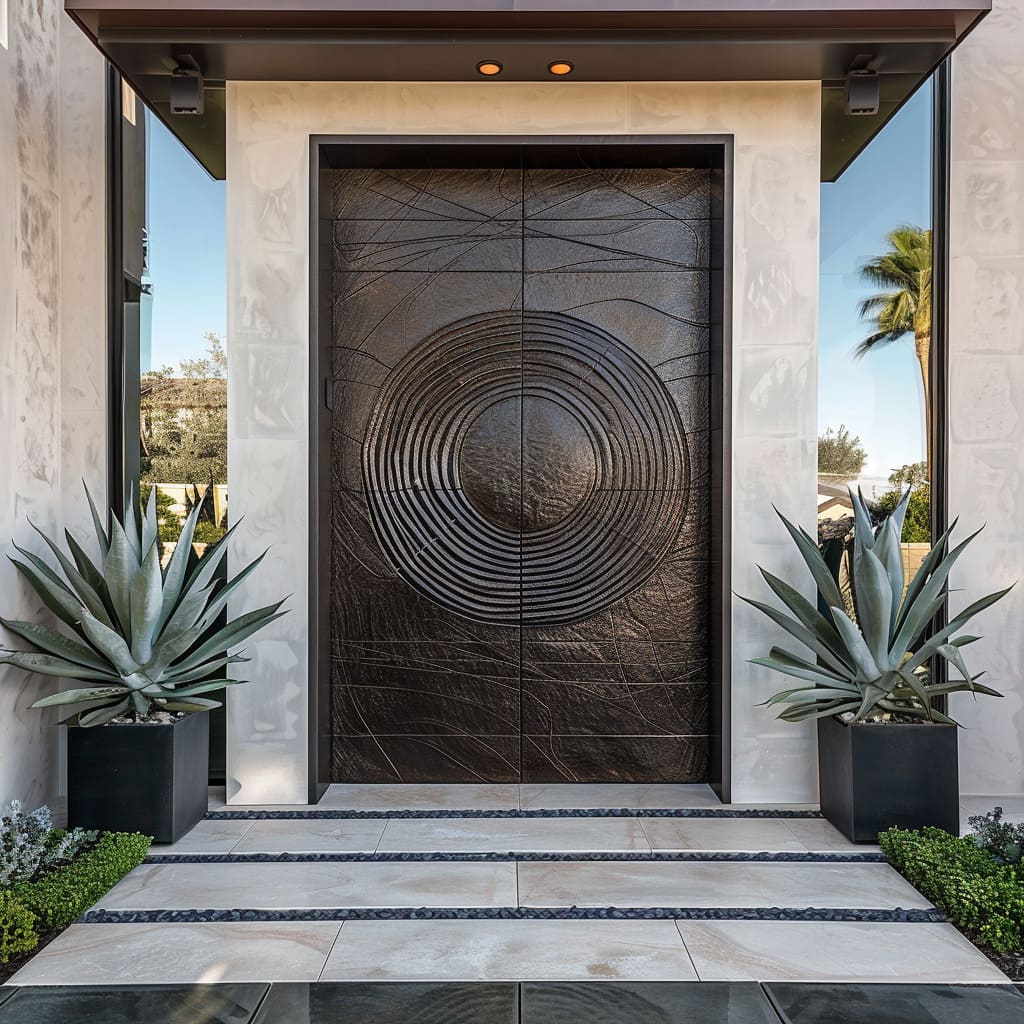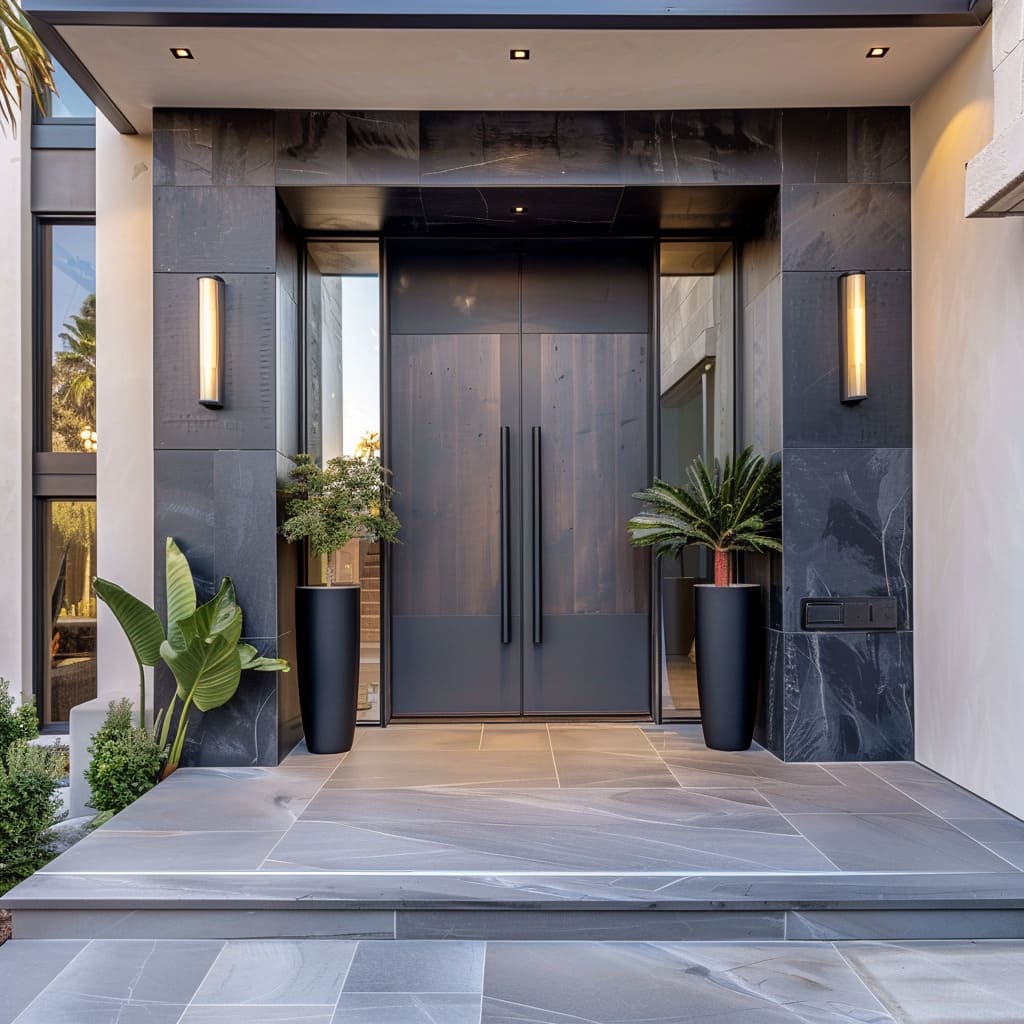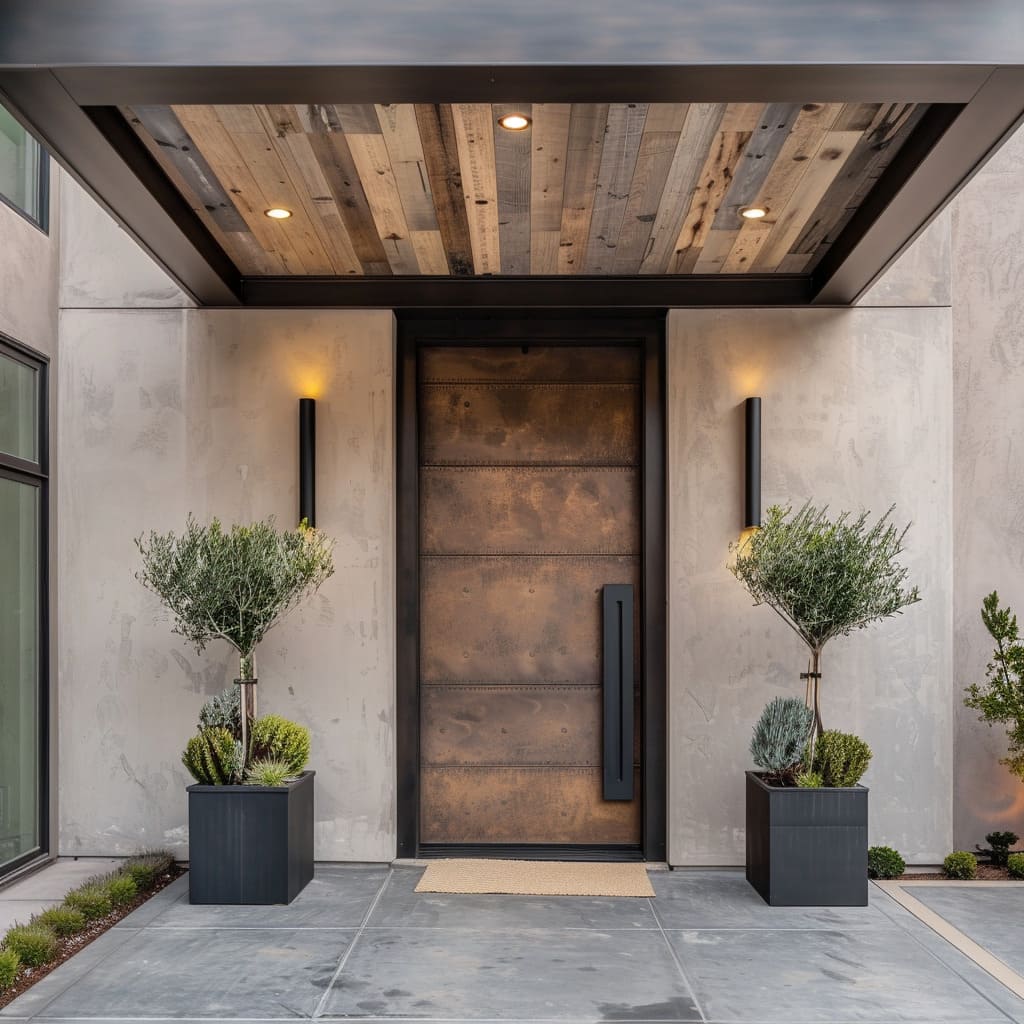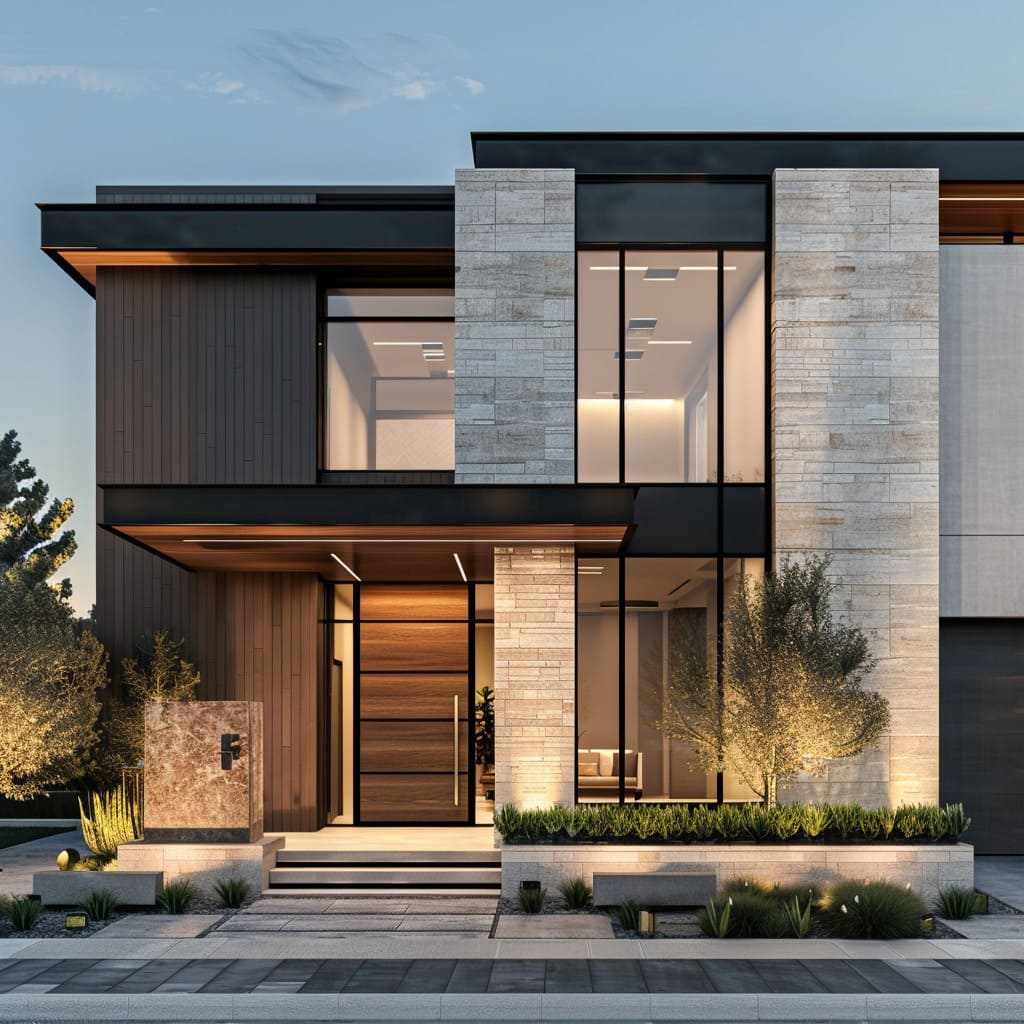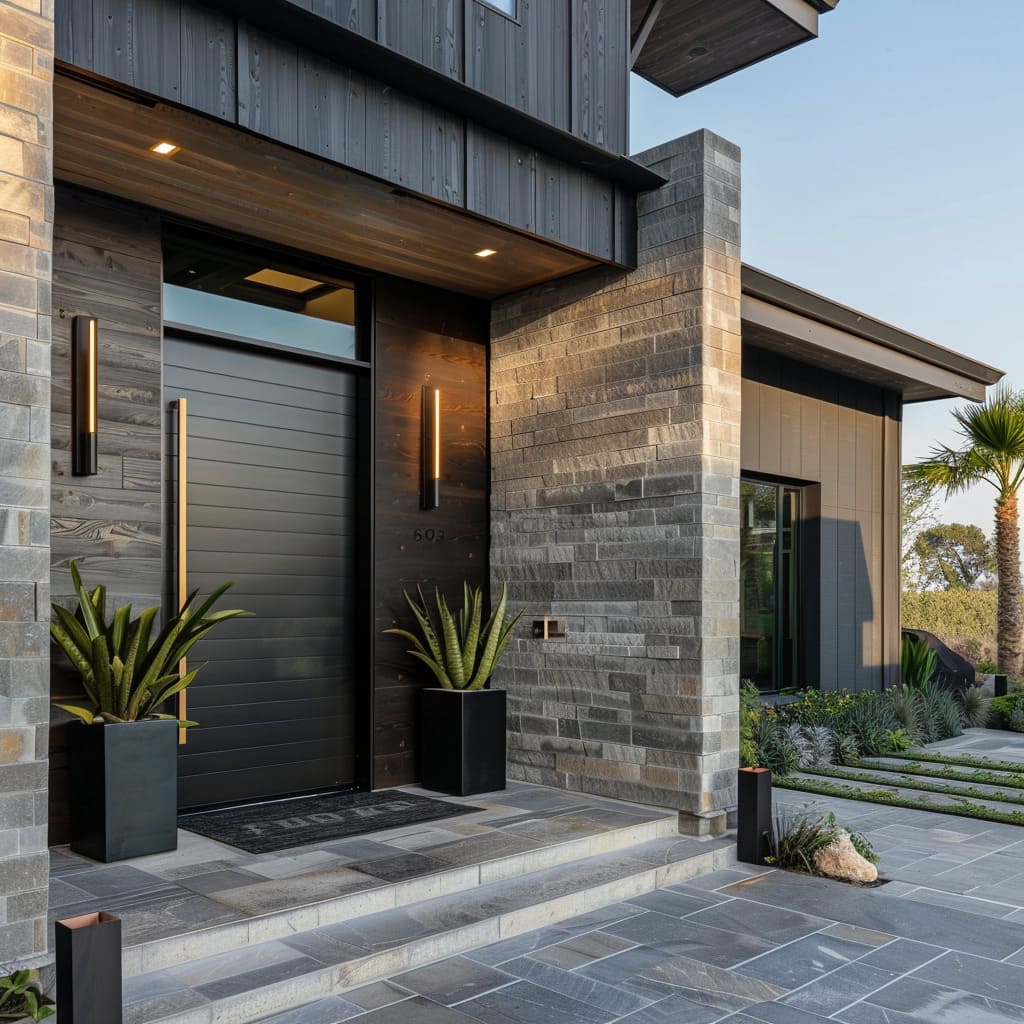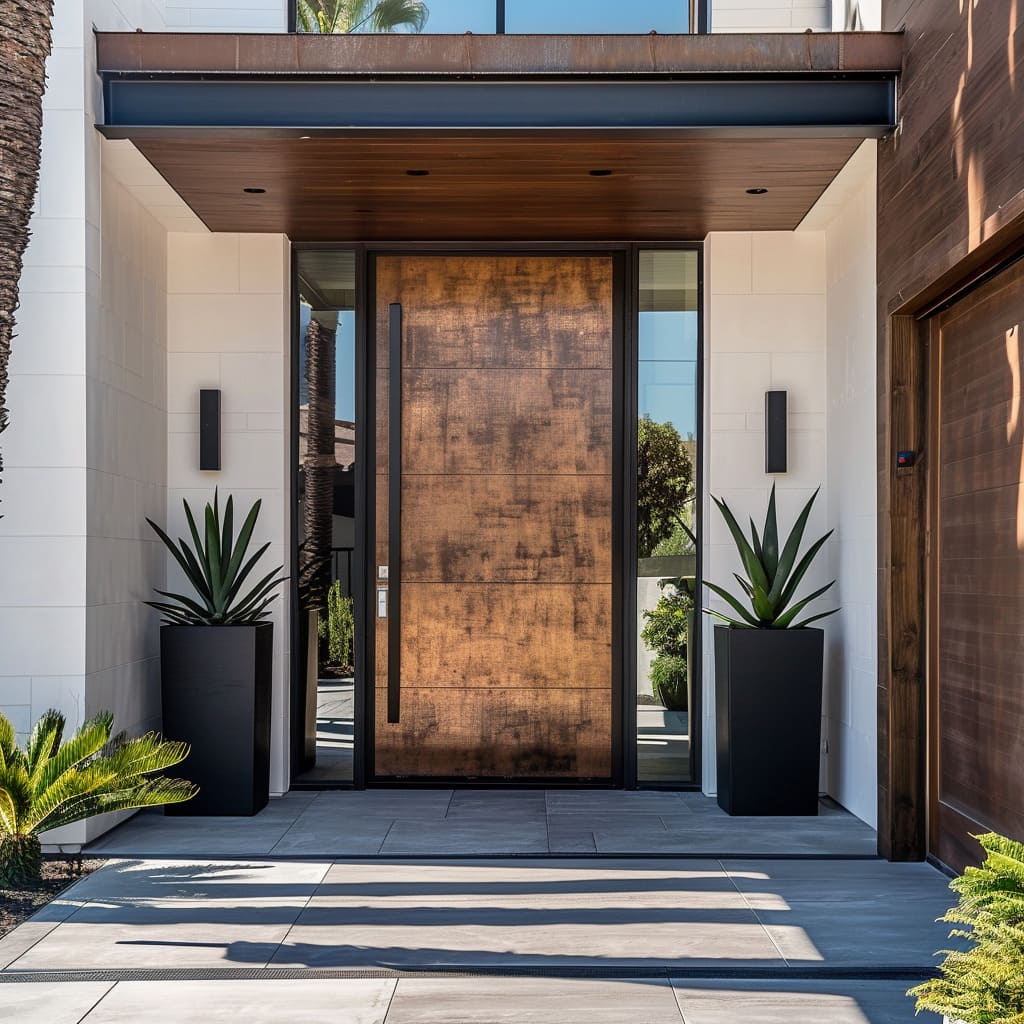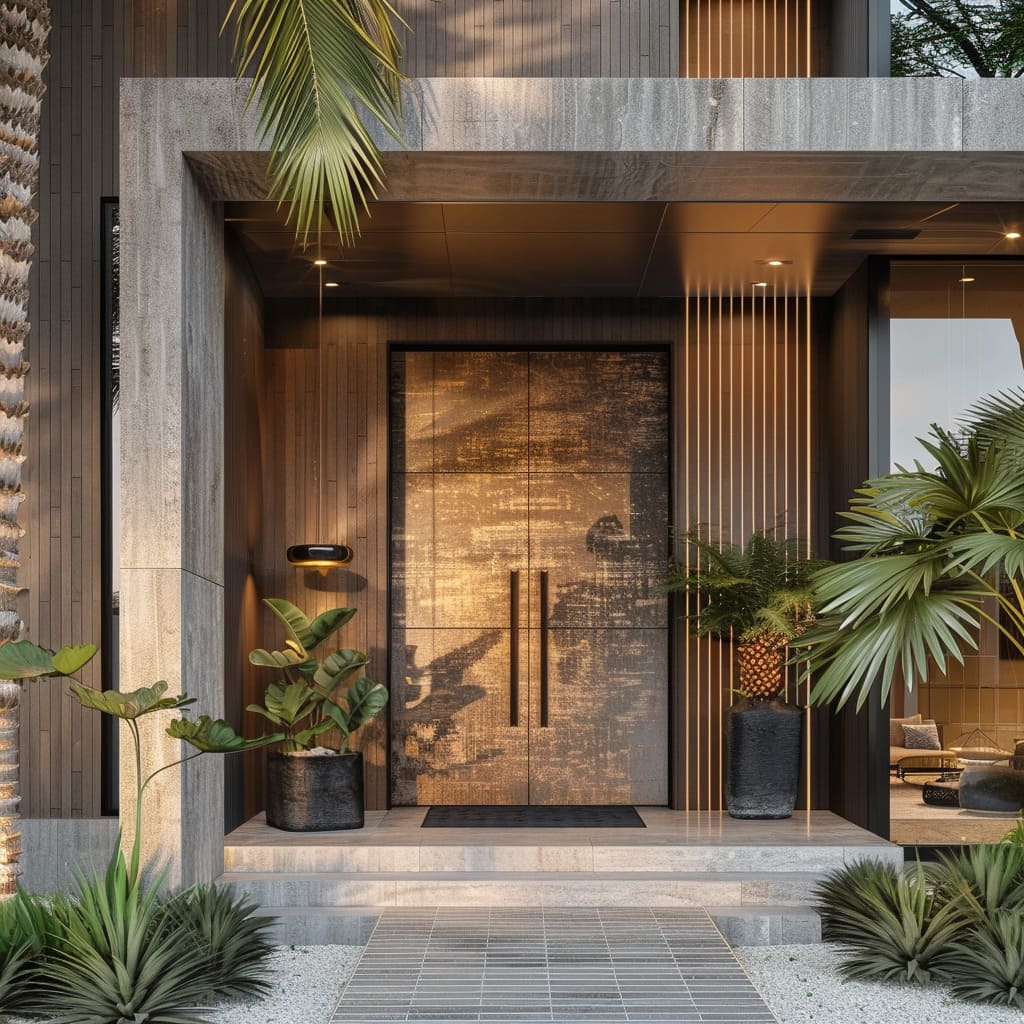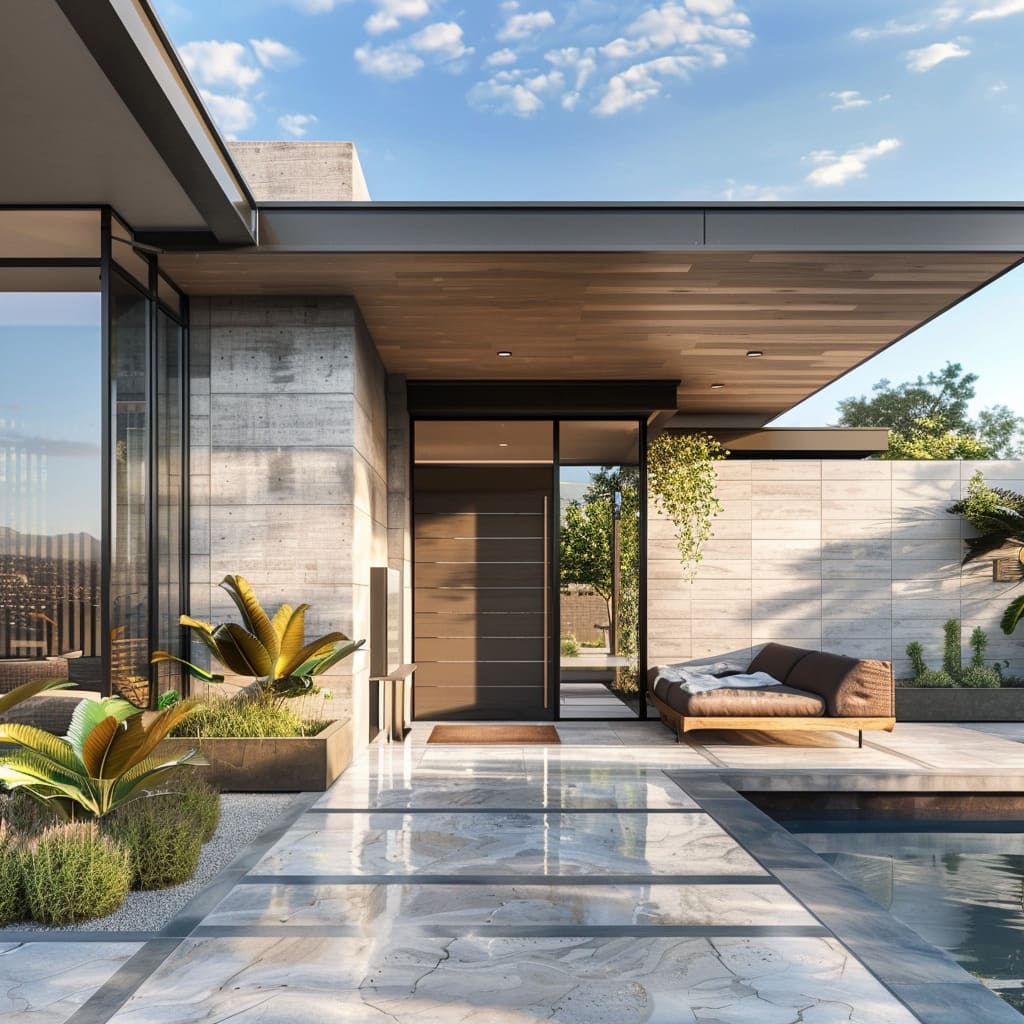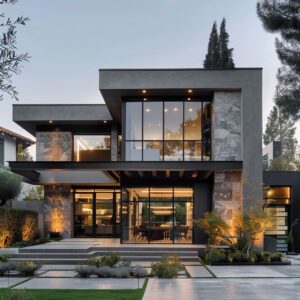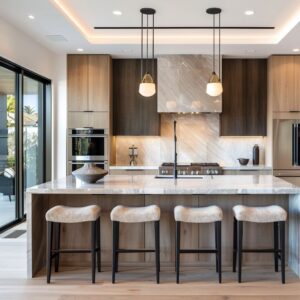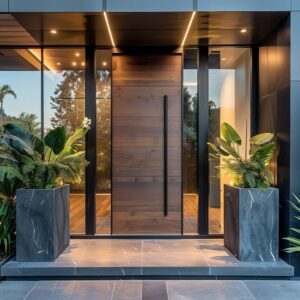In modern architectural design, the entrance door serves as a crucial element that can significantly influence the first impression of a home. An entrance door is not merely a functional component; it is a defining feature that sets the tone for the entire property. With bold designs and striking aesthetics, statement doors can transform the exterior of a house, creating a focal point that exudes style and sophistication.
Statement doors are more than just a way to enter and exit a house; they embody the personality and taste of the homeowner. By selecting a door with unique materials and innovative designs, homeowners can make a powerful statement about their style preferences and the overall aesthetic of their home. These doors act as a prelude to the interior, hinting at the design themes that continue within.
This article delves into the various design elements and ideas for creating bold, impressive statement doors for modern houses. From material choices to design patterns, we will explore how to craft a luxury front door design for mansions and how custom front doors with unique designs can elevate a home’s exterior.
Material Choices for Statement Doors
One of the most critical aspects of designing a statement door is the choice of materials. The materials not only determine the door’s appearance but also its durability and maintenance requirements.
Here, we discuss a variety of materials used in creating stunning statement doors:
Reclaimed Wood for a Rustic Yet Refined Look
Reclaimed wood offers a timeless and eco-friendly option for statement doors. Its weathered texture and rich history bring a rustic charm that is both unique and refined.
Each piece of reclaimed wood tells a story, adding character and depth to the entrance. The imperfections and variations in the wood enhance its beauty, making it a perfect choice for those looking to add warmth and personality to their home.
Dark Metals for a Sleek, Industrial Feel
Dark metals, such as steel or iron, provide a sleek and modern look that is ideal for contemporary homes.
Custom-made iron front doors are particularly popular for their strength and durability. These doors can be designed with clean lines and minimalist aesthetics, creating a bold statement that is both functional and stylish. The dark finish of the metal contrasts beautifully with other materials, adding a striking visual element to the facade.
Combination of Wood and Metal for a Warm, Contemporary Aesthetic
Combining wood and metal in a statement door design can result in a warm and contemporary aesthetic. The warmth of wood softens the industrial feel of metal, creating a balanced look that is both inviting and modern. This combination allows for creative design possibilities, such as metal inlays in a wooden door or wood panels framed by metal.
The blend of these materials can produce a door that stands out while seamlessly integrating with the overall design of the house.
Textured Materials Such as Patina-Finished Metals for Added Character
Using textured materials, such as patina-finished metals, can add character and depth to a statement door. The patina finish gives the metal an aged and weathered look, adding a layer of complexity to the design. This texture can create a rich visual effect that changes with the light, offering a dynamic and ever-changing appearance.
Patina-finished metals work well in both traditional and modern settings, providing a versatile option for creating unique and captivating doors.
Benefits of Mixing Materials to Achieve a Unique Design
Mixing different materials in a statement door design can achieve a unique and personalized look. By combining elements such as wood, metal, and glass, homeowners can create bespoke front doors with stained glass that reflect their individual style. This approach allows for endless customization options, ensuring that each door is truly one-of-a-kind.
The interplay of different textures and finishes adds depth and interest, making the door a standout feature of the home.
In conclusion, the choice of materials plays a vital role in crafting impressive statement doors for bold modern houses. Whether opting for the rustic charm of reclaimed wood, the sleekness of dark metals, the warmth of a wood-metal combination, or the character of textured materials, each option offers unique advantages.
Mixing these materials can result in custom front doors with unique designs that enhance the overall aesthetic of a home and create a lasting impression.
Design and Pattern Variations
The design and pattern of a statement door play a crucial role in defining its character and impact. Here are some key variations to consider:
Vertical and Horizontal Panels to Emphasize Height and Width
Using vertical panels can enhance the perception of height, making an entrance appear taller and more imposing.
This design is particularly effective for creating a grand and stately look. Conversely, horizontal panels can emphasize width, giving the door a broader and more expansive feel.
This approach works well for modern luxury entrance door ideas, where the goal is to create an impressive and welcoming entryway. Both orientations can be combined to achieve a balanced and dynamic design that draws the eye and creates visual interest.
Square Panels with Varying Textures and Finishes for a Complex, Layered Look
Square panels offer a versatile canvas for experimentation with textures and finishes. By incorporating panels with different surface treatments—such as smooth, matte, glossy, or textured—one can create a complex, layered look that adds depth and dimension to the door.
This approach allows for a high degree of customization and personalization, resulting in custom bespoke wooden front doors that stand out as unique works of art. The interplay of textures and finishes can transform a simple door into a statement piece that captures attention and admiration.
Organic Patterns and Irregular Textures for a Natural, Artisanal Feel
Incorporating organic patterns and irregular textures into door designs can impart a natural, artisanal feel that resonates with those who appreciate handcrafted wooden entrance doors.
These designs often mimic the imperfect beauty found in nature, with flowing lines, uneven surfaces, and a mix of materials. This approach adds warmth and character to the entrance, making it feel more inviting and authentic. Organic patterns can be subtle or bold, depending on the desired effect, and can be used to create a connection between the door and its natural surroundings.
The Role of Symmetry and Asymmetry in Modern Door Designs
Symmetry is often associated with balance, order, and formality. Symmetrical door designs feature elements that are evenly distributed on either side of a central axis, creating a harmonious and pleasing appearance.
This style is ideal for traditional and formal settings. On the other hand, asymmetry can introduce a sense of movement, creativity, and modernity. Asymmetrical designs deliberately place elements off-center or in irregular arrangements, breaking the conventional rules to create something unexpected and dynamic.
Both approaches have their merits, and the choice between symmetry and asymmetry should be guided by the overall design intent and architectural context.
Frame and Trim Considerations
The frame and trim of a statement door are essential elements that enhance its overall appearance and integration with the surrounding architecture:
Black Metal Trim for a Cohesive, Modern Look
Black metal trim is a popular choice for modern statement doors due to its sleek and cohesive appearance. It provides a sharp contrast to natural materials like wood or stone, highlighting the door’s design and adding a touch of industrial chic.
This type of trim is versatile and can be used with various door styles, making it a staple in modern luxury entrance door ideas.
Contrasting Trims to Highlight the Door’s Design
Using trims in contrasting colors or materials can effectively highlight the design of a statement door. For instance, a wooden door framed in metal trim or a dark door with a light trim can create a striking visual effect.
This technique draws attention to the door and accentuates its unique features, making it a focal point of the home’s exterior.
Integration of Glass Sidelights within the Framing for Added Light and Openness
Glass sidelights integrated into the door frame can significantly enhance the entrance by allowing natural light to enter and providing a sense of openness. These sidelights can be framed with the same material as the door or with a contrasting trim to create a cohesive look. The inclusion of glass elements not only brightens the entryway but also offers glimpses of the interior, inviting curiosity and adding to the door’s visual appeal.
Handle and Hardware Selections
The choice of handles and hardware is crucial in defining the functionality and aesthetic appeal of a statement door:
Long, Vertical Handles for a Sleek, Modern Touch
Long, vertical handles are a hallmark of contemporary door designs. They add a sleek and modern touch, enhancing the door’s vertical lines and making it easier to open and close.
These handles are often made of metal and can be finished to match or contrast with the door’s material, adding to the overall design coherence.
Metallic Finishes to Complement the Door’s Material
Handles and hardware in metallic finishes, such as brushed nickel, stainless steel, or blackened iron, can complement the door’s material and finish. For example, a metal handle on a wooden door or a polished chrome handle on a dark metal door can create a refined and cohesive look. The choice of finish should enhance the door’s aesthetic and blend seamlessly with the surrounding elements.
Functional and Aesthetic Considerations for Handle Placement and Style
The placement and style of door handles are important for both functional and aesthetic reasons. Handles should be positioned for ease of use and accessibility while contributing to the door’s overall design.
Modern designs often feature minimalist handles that align with the door’s clean lines, while more traditional designs may include ornate handles that add decorative flair. The handle style should reflect the door’s design theme and enhance its visual appeal without compromising functionality.
In summary, the design and pattern variations, frame and trim considerations, and handle and hardware selections are all critical components in creating impressive statement doors for bold modern houses. By thoughtfully combining these elements, homeowners can achieve a striking entrance that sets the tone for their entire home and reflects their unique style and taste.
Surrounding Wall and Siding Integration
The materials chosen for the walls and siding surrounding the entrance door significantly impact the overall aesthetic and harmony of the facade. Here are some key considerations:
Use of Stone Tiles and Cladding for a Sophisticated Backdrop
Stone tiles and cladding provide a rich, textured backdrop that complements various door designs, including custom bespoke wooden front doors.
The natural variations in stone, such as veining and color shifts, add depth and sophistication to the exterior. This material works exceptionally well with doors that have a more rustic or natural feel, enhancing their organic appeal. Stone cladding can create a striking contrast with sleek, modern doors, highlighting their contemporary lines while grounding the design in timeless elegance.
Wooden Siding for Warmth and Texture Contrast
Wooden siding brings warmth and a natural touch to the entrance, offering a beautiful contrast to metal and stone elements. This material is particularly effective in adding texture and depth, creating a welcoming atmosphere.
When paired with bespoke metal entrance doors, wooden siding can soften the industrial feel, resulting in a balanced and inviting facade. The use of wood can range from subtle accents to extensive paneling, depending on the desired effect.
Smooth Stucco for a Clean, Minimalist Look
Smooth stucco provides a clean, minimalist backdrop that enhances the simplicity and elegance of modern door designs. This material offers a seamless and polished look, ideal for high-end front door design inspiration. Stucco can be painted in various colors to match or contrast with the door, allowing for versatile design options.
Its smooth finish creates a sleek, uncluttered appearance, making the entrance look sophisticated and refined.
Creating a Balanced Aesthetic with Varying Textures and Colors
Achieving a balanced aesthetic involves thoughtfully combining different textures and colors. For instance, pairing rough stone cladding with smooth stucco can create a dynamic visual contrast. Similarly, incorporating wooden siding alongside metal trim can add warmth and depth to the design.
The key is to ensure that the materials complement each other and the statement door, creating a cohesive and harmonious look. Balancing these elements can enhance the overall impact of the entrance, making it both visually striking and inviting.
Flooring and Pathway Design
The design of the flooring and pathway leading to the entrance plays a crucial role in setting the stage for the statement door:
Large, Rectangular Stone Tiles for a Modern, Structured Feel
Using large, rectangular stone tiles for the flooring creates a modern and structured feel. These tiles offer a clean, geometric pattern that guides visitors to the entrance, emphasizing the linear aspects of the design.
The choice of stone can complement the materials used in the door and surrounding walls, ensuring a cohesive look. This approach is particularly effective for entrances featuring custom metal entrance doors with intricate designs, as the simplicity of the flooring can highlight the door’s complexity.
Patterns and Layouts that Guide Visitors to the Entrance
The layout of the tiles or pavers should be designed to guide visitors naturally toward the entrance. Patterns such as staggered rows or diagonal placements can create visual interest and direct foot traffic effectively. Incorporating different textures or colors within the pattern can further enhance the pathway’s aesthetic appeal.
Thoughtful design of the pathway ensures a smooth and inviting approach to the statement door, enhancing the overall experience.
Integration of LED Lighting in Pathways for Safety and Elegance
Integrating LED lighting into the pathways not only ensures safety but also adds an element of elegance. LED lights can be embedded along the edges of the tiles or within the joints, providing subtle illumination that highlights the path. This lighting can create a welcoming ambiance, especially in the evening, and accentuate the textures and materials of the pathway.
The use of LED lighting adds a modern touch and enhances the visual appeal of the entrance.
Lighting for Impact and Functionality
Proper lighting is essential for showcasing the statement door and enhancing the overall entrance design:
Recessed Lighting in Overhangs to Highlight Textures
Recessed lighting installed in overhangs can effectively highlight the textures and details of the entrance door and surrounding materials. This type of lighting casts a soft, downward glow that accentuates the door’s design and the nuances of materials like stone and wood. Recessed lights provide functional illumination without detracting from the door’s aesthetic, making them an ideal choice for modern entrances.
Wall-Mounted Lights to Create Dramatic Effects
Wall-mounted lights can create dramatic effects by casting light and shadow on the entrance. These lights can be positioned to highlight specific features, such as the door handle or a particular texture on the wall. The interplay of light and shadow adds depth and dimension to the facade, making the entrance more visually engaging.
Wall-mounted lights can be used in conjunction with recessed lighting to create a layered lighting scheme that enhances both functionality and aesthetics.
Integrated LED Lights in Steps and Pathways for an Inviting Ambiance
Incorporating LED lights into steps and pathways ensures both safety and an inviting ambiance. These lights can be embedded in the risers of steps or along the edges of the pathway, providing subtle yet effective illumination. LED lights can guide visitors to the entrance while highlighting the design elements of the flooring and pathway.
The use of LED lighting adds a contemporary touch and enhances the overall visual impact of the entrance.
In conclusion, the integration of surrounding wall materials, thoughtful flooring and pathway design, and strategic lighting are all essential components in creating an impressive statement door for bold modern houses. By combining these elements, homeowners can achieve a harmonious and striking entrance that enhances the aesthetic appeal and functionality of their home.
Overhangs and Roof Design
Providing Shelter and Architectural Interest
Overhangs serve multiple purposes, providing practical benefits and enhancing the architectural appeal of a home. By extending over the entrance, they offer shelter from the elements, protecting both the doorway and visitors from rain and sun. This functional aspect is crucial for maintaining the integrity of high-quality bespoke entrance doors, which can be susceptible to weather damage if left exposed.
Material Choices for the Underside of Overhangs, Such as Dark Wood
The underside of an overhang presents an opportunity to incorporate additional design elements that complement the statement door. Using materials like dark wood can add a touch of warmth and sophistication. This choice contrasts beautifully with sleek modern finishes, creating a balanced look that integrates well with other elements such as stone or metal cladding.
Dark wood also provides a rich texture that enhances the visual depth of the entrance.
Clean, Linear Rooflines Typical of Modern Design
Modern house designs often feature clean, linear rooflines that contribute to a sleek and streamlined appearance. These rooflines align with the minimalist aesthetic, emphasizing simplicity and functionality.
They also provide a cohesive framework that ties together various architectural elements, from the entrance door to the surrounding walls and windows. Clean rooflines can be particularly effective in highlighting elegant luxury entrance door styles, ensuring that the door remains the focal point of the design.
Landscaping and Natural Elements
Use of Planters with Lush Plants and Ornamental Grasses
Integrating planters with lush plants and ornamental grasses is an excellent way to soften the hard lines of modern architecture. These elements add a touch of nature, creating a welcoming and serene atmosphere. Planters can be strategically placed near the entrance to frame the door and enhance its presence.
The greenery contrasts with materials like metal and stone, bringing a sense of balance and harmony to the overall design.
Placement of Trees and Shrubs to Frame the Entrance
The placement of trees and shrubs around the entrance plays a significant role in framing the statement door. Trees can provide a natural canopy, echoing the shelter provided by overhangs, while shrubs add texture and depth at ground level.
Choosing the right types of trees and shrubs to complement the design of the door is essential. For instance, sleek, modern homes may benefit from minimalist, sculptural plants, whereas more traditional designs might pair well with lush, flowering shrubs.
Selection of Plant Types to Complement the Door’s Design
Selecting plant types that complement the design of the door enhances the overall aesthetic. For example, luxury glass entrance doors may pair well with contemporary plants like bamboo or tall grasses, which reflect the sleek and transparent qualities of the glass. Conversely, custom bespoke wooden front doors might be complemented by more traditional plants like boxwood or hydrangeas, which enhance the natural, handcrafted feel of the wood.
The key is to choose plants that enhance and echo the design elements of the door and surrounding architecture.
Adjacent Structures and Windows
Floor-to-Ceiling Glass Panels for Natural Light and Openness
Floor-to-ceiling glass panels are a hallmark of modern design, allowing for an abundance of natural light and a seamless connection between the interior and exterior spaces. These panels can be integrated into the entrance design, flanking the statement door to enhance its presence and illuminate the entryway. This approach is particularly effective for homes that feature custom front doors for modern homes, as it highlights the door’s design while creating a bright and inviting atmosphere.
Framing Windows in Materials That Match the Door Trim
Framing adjacent windows in materials that match the door trim creates a cohesive look that ties the entire entrance together. For instance, if the door features black metal trim, using the same material for window frames can create a unified and polished appearance. This consistency in materials ensures that the door and windows complement each other, enhancing the overall design integrity of the home.
Creating Visual Continuity Between the Entrance and Interior Spaces
Creating visual continuity between the entrance and interior spaces ensures a seamless transition from outside to inside. This can be achieved by using similar materials, colors, and design elements in both areas. For example, the use of similar flooring materials or color palettes can create a harmonious flow.
Ensuring that the style of the door reflects the interior design theme, such as using artisan crafted bespoke front doors for a home with handcrafted interior details, helps maintain a cohesive and aesthetically pleasing environment.
Conclusion
To create an impressive statement door design, it is essential to consider various elements, from material choices and design patterns to the integration of surrounding architectural features and landscaping. Each component plays a crucial role in enhancing the door’s presence and the overall aesthetic of the home.
Achieving a harmonious design requires thoughtful coordination between the statement door, surrounding materials, and landscaping. By carefully selecting and integrating these elements, homeowners can create an entrance that is both visually striking and welcoming.
A well-designed entrance sets the tone for the entire home, reflecting the homeowner’s taste and style. Whether through the use of high-end materials, innovative design patterns, or complementary landscaping, an impressive statement door can significantly enhance the overall aesthetic of a modern house.

